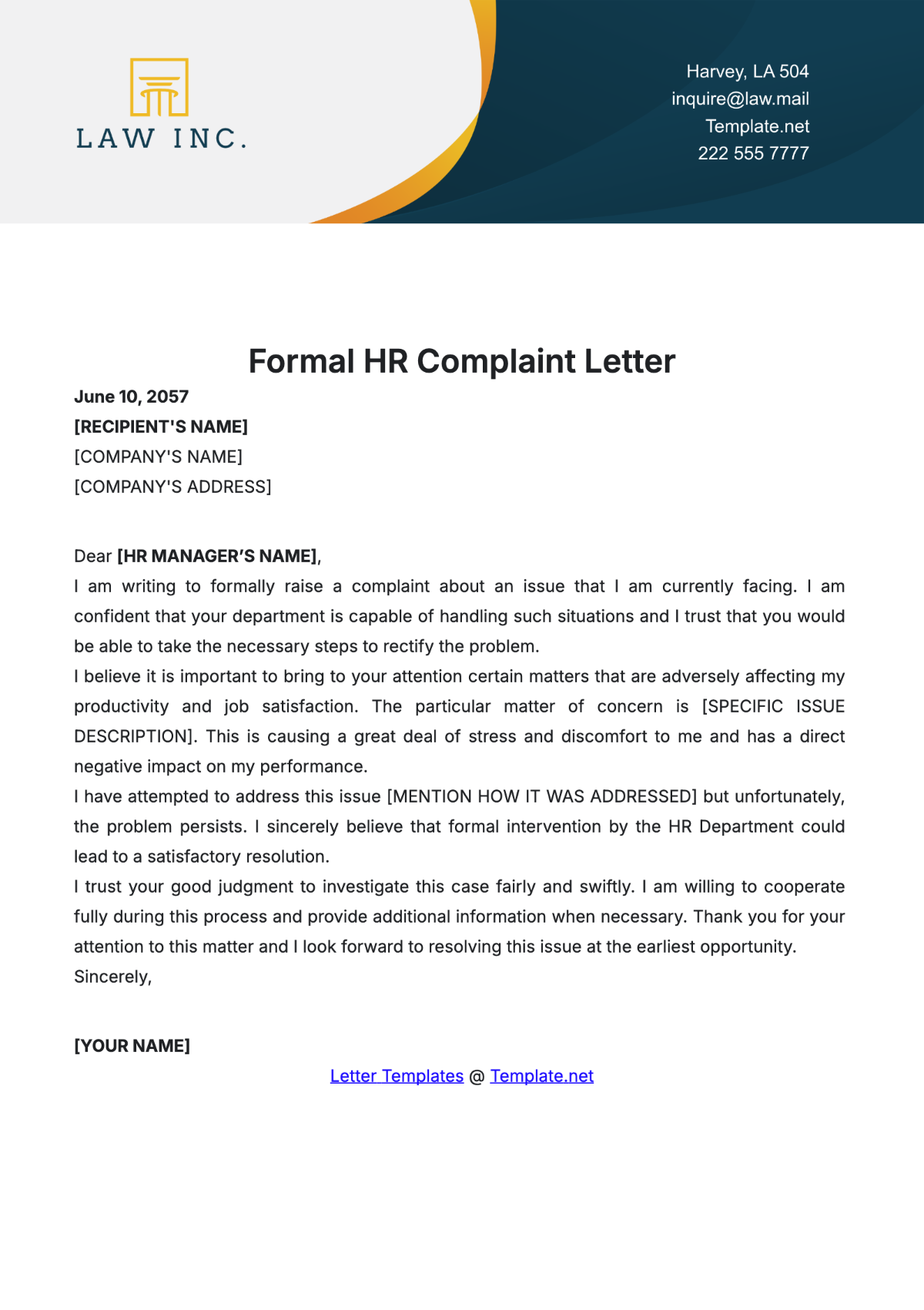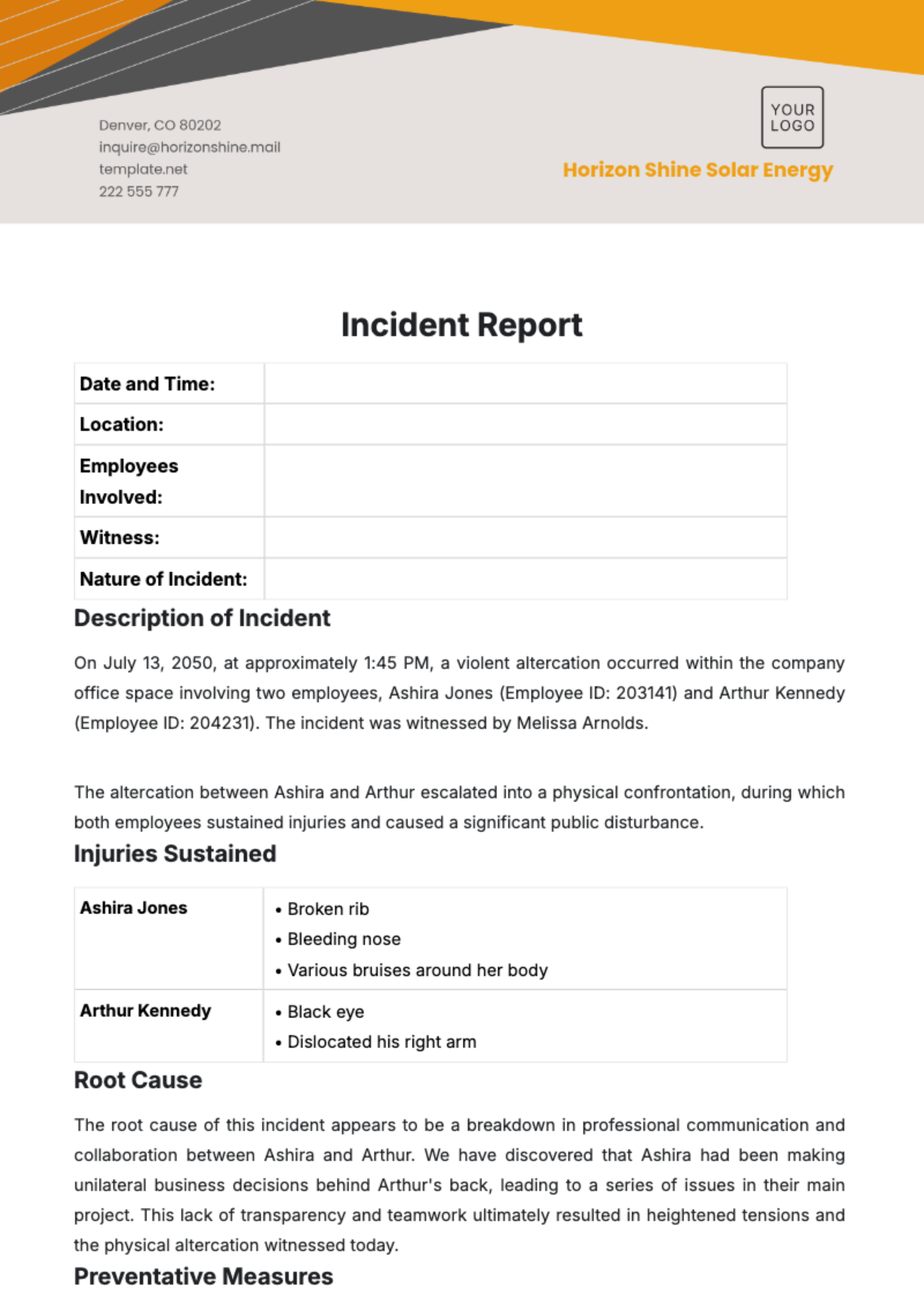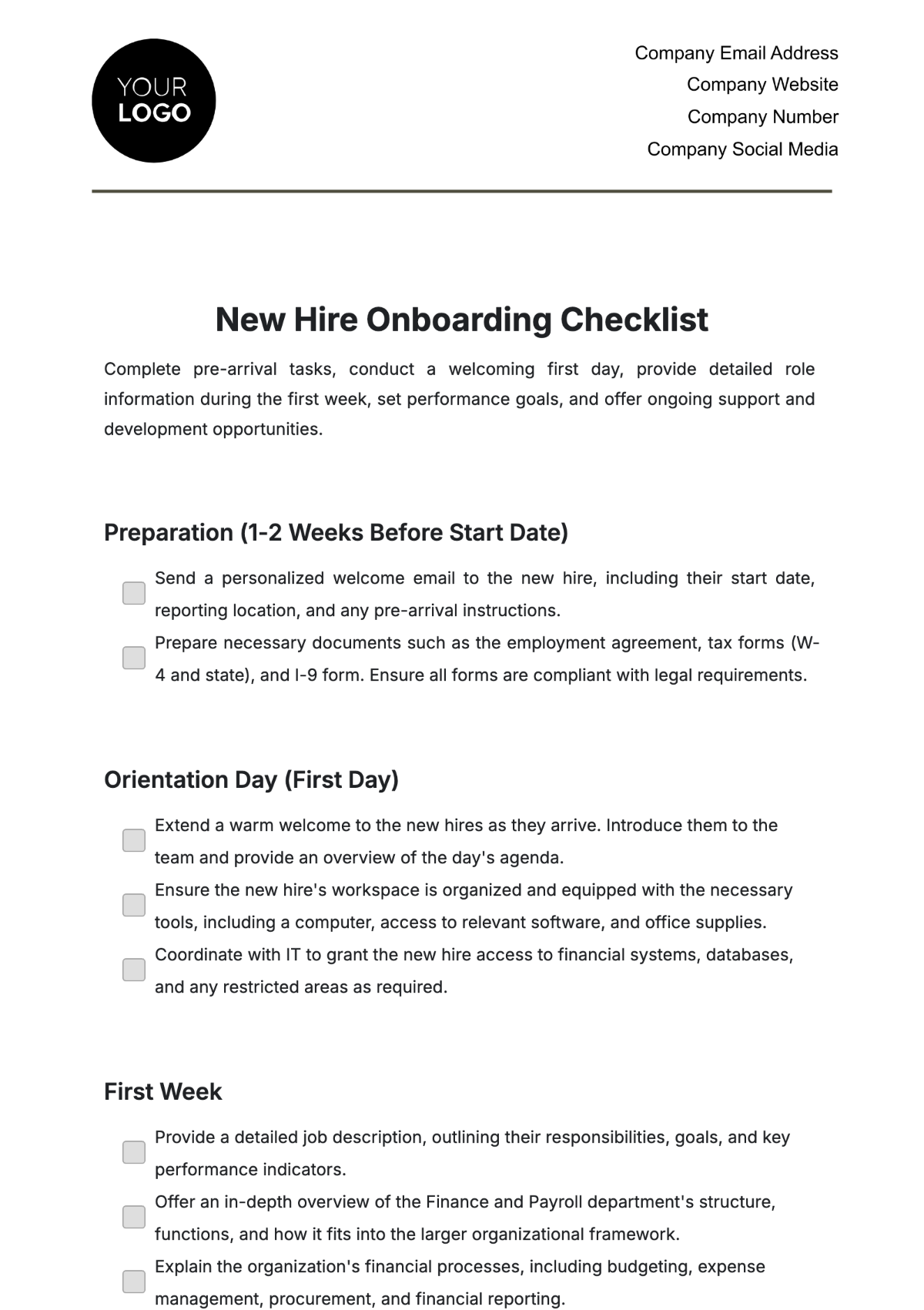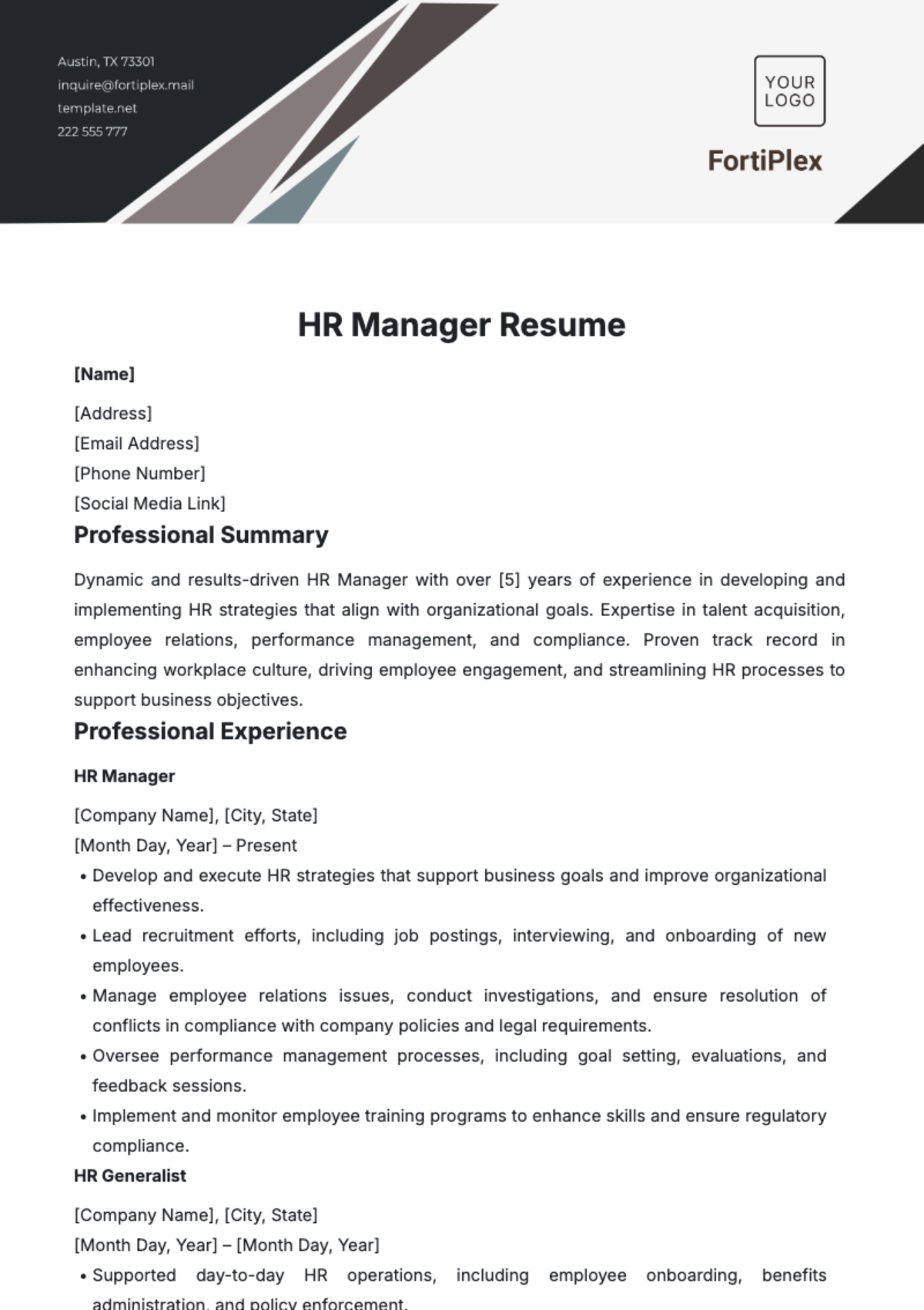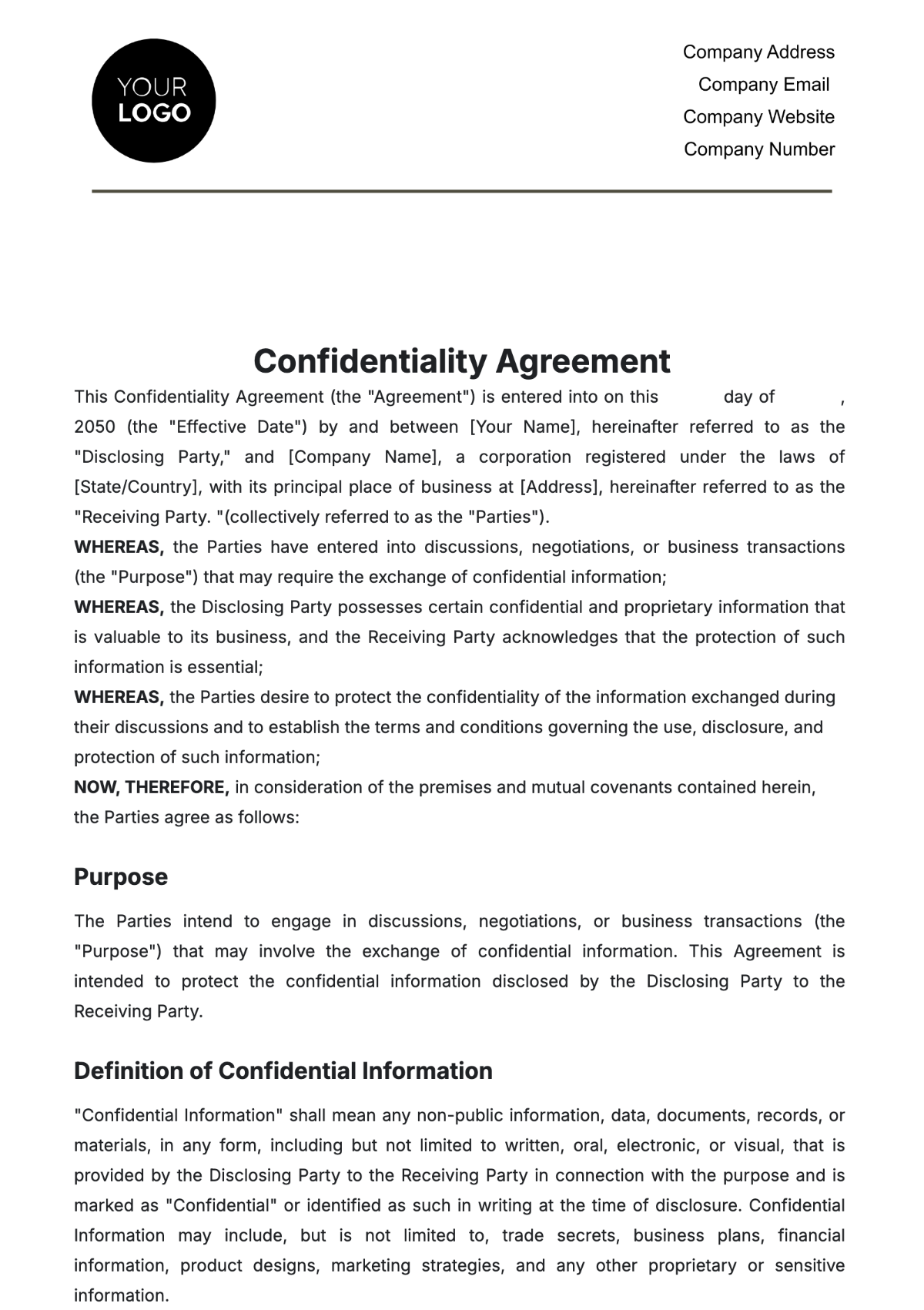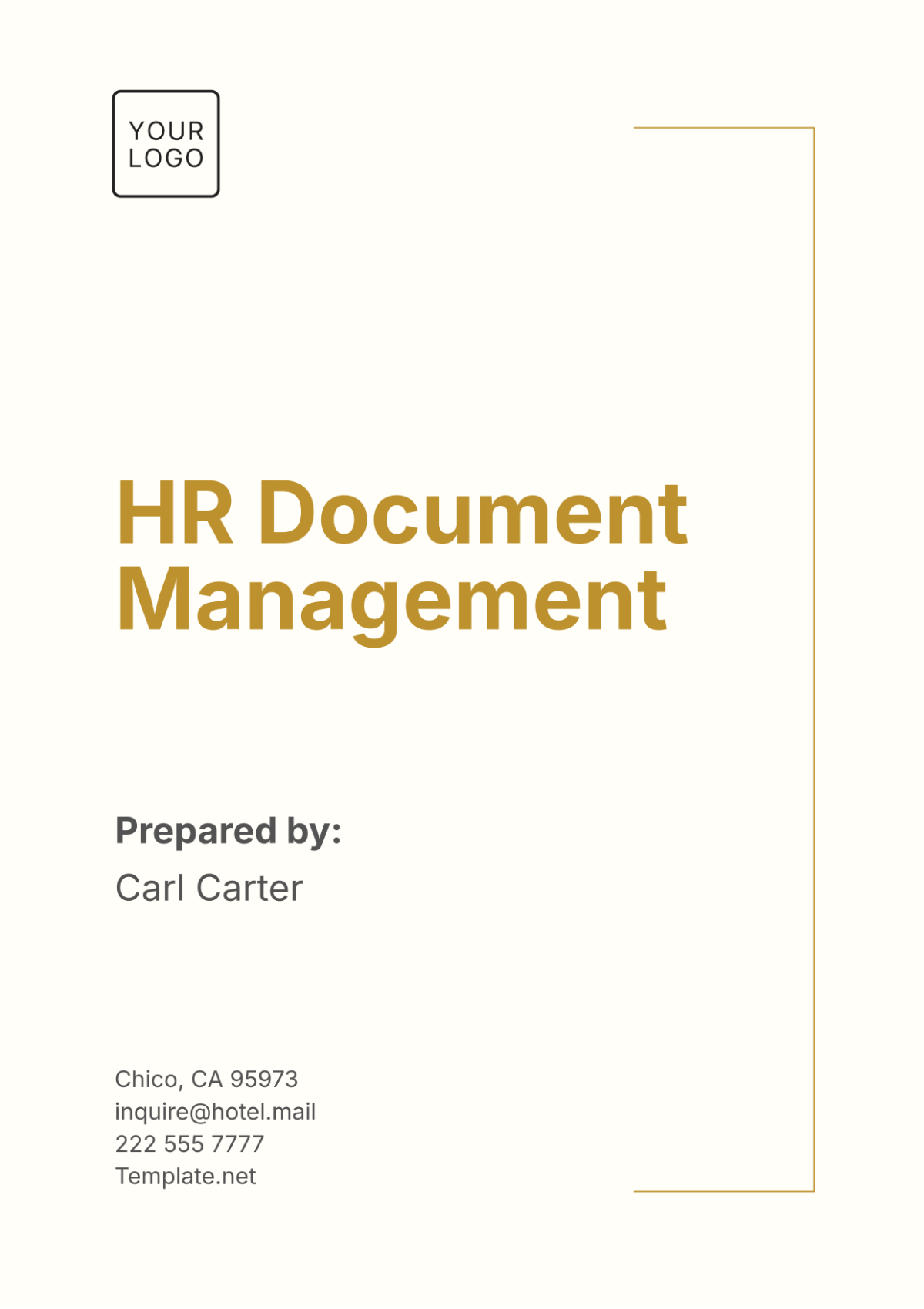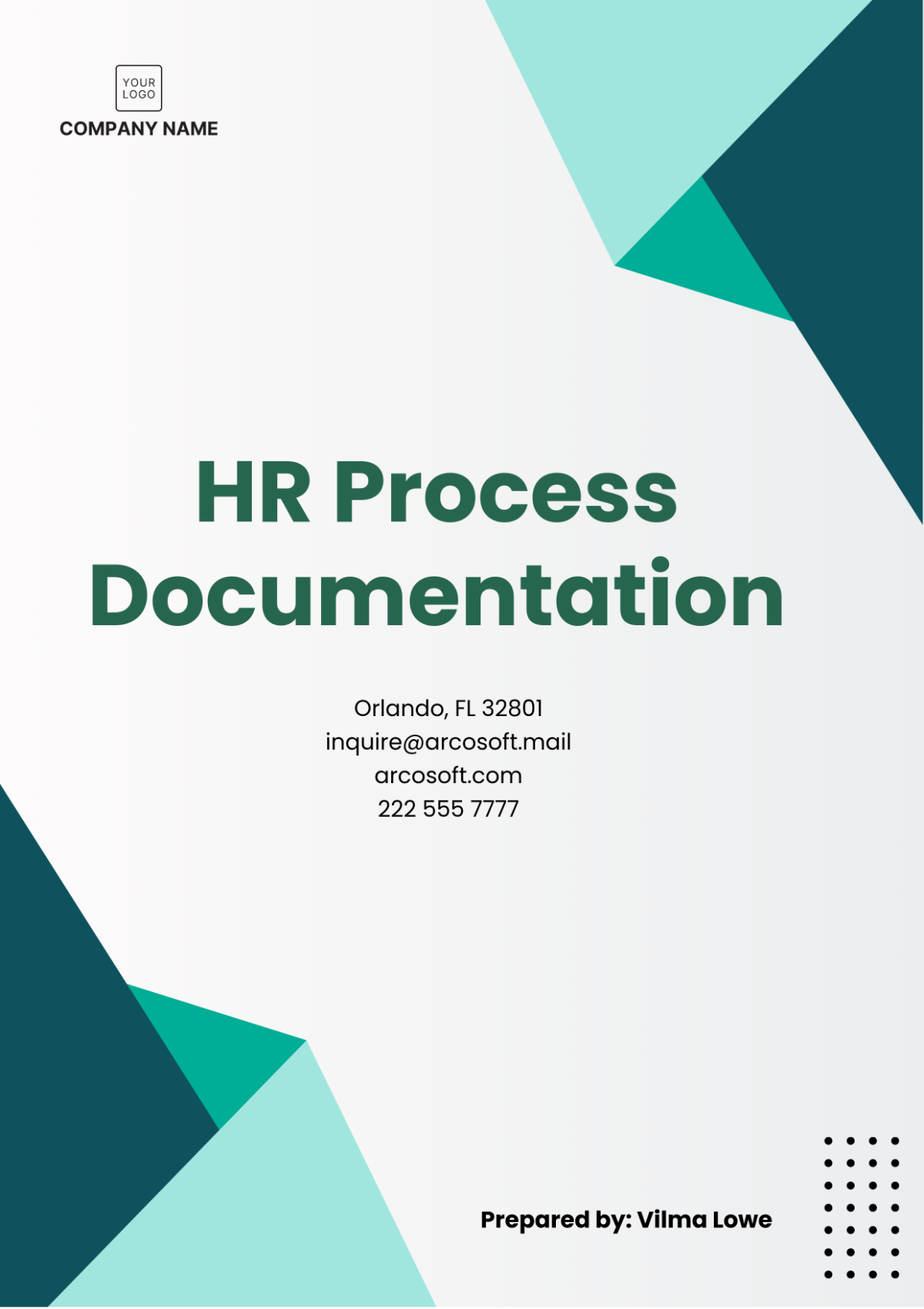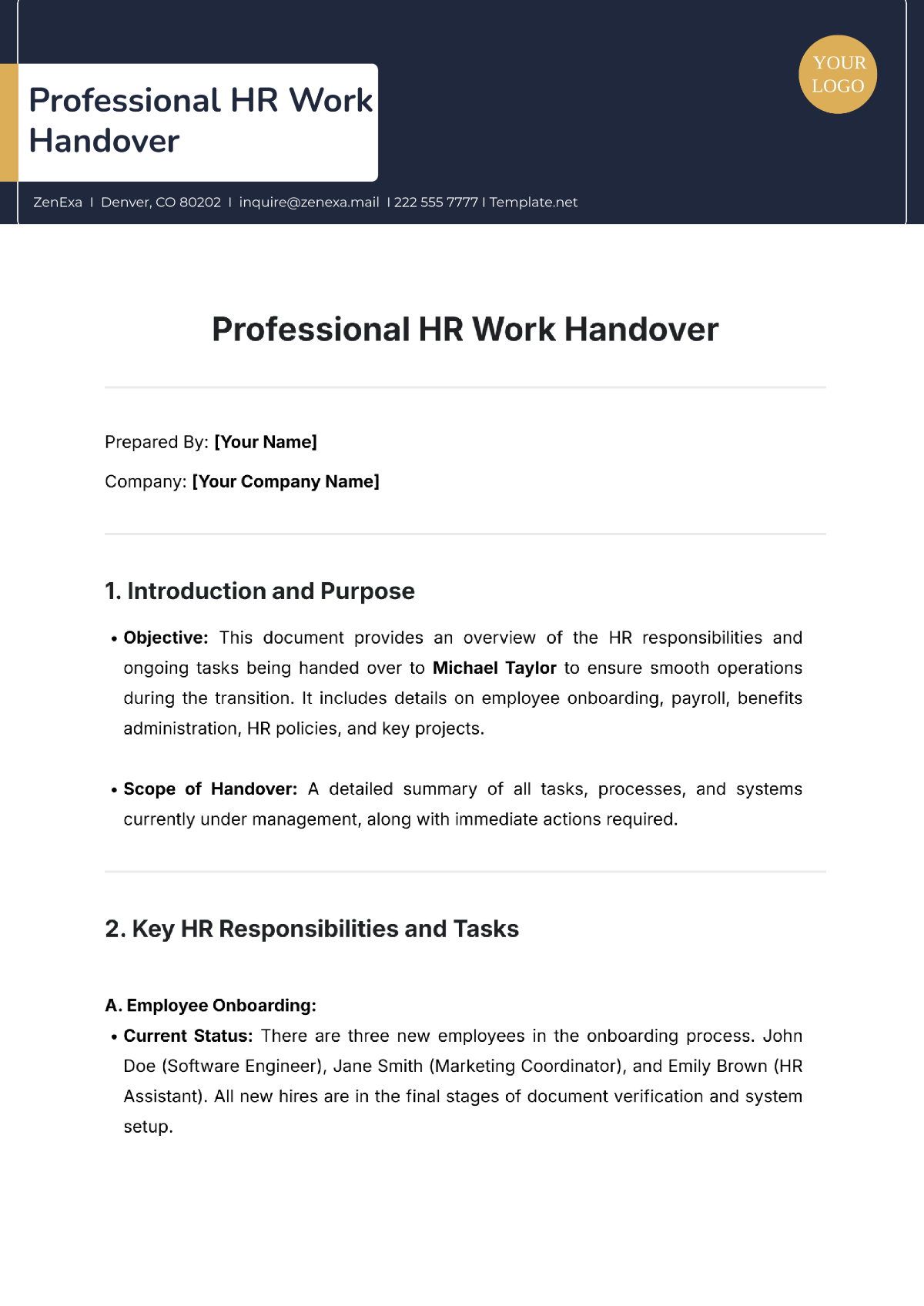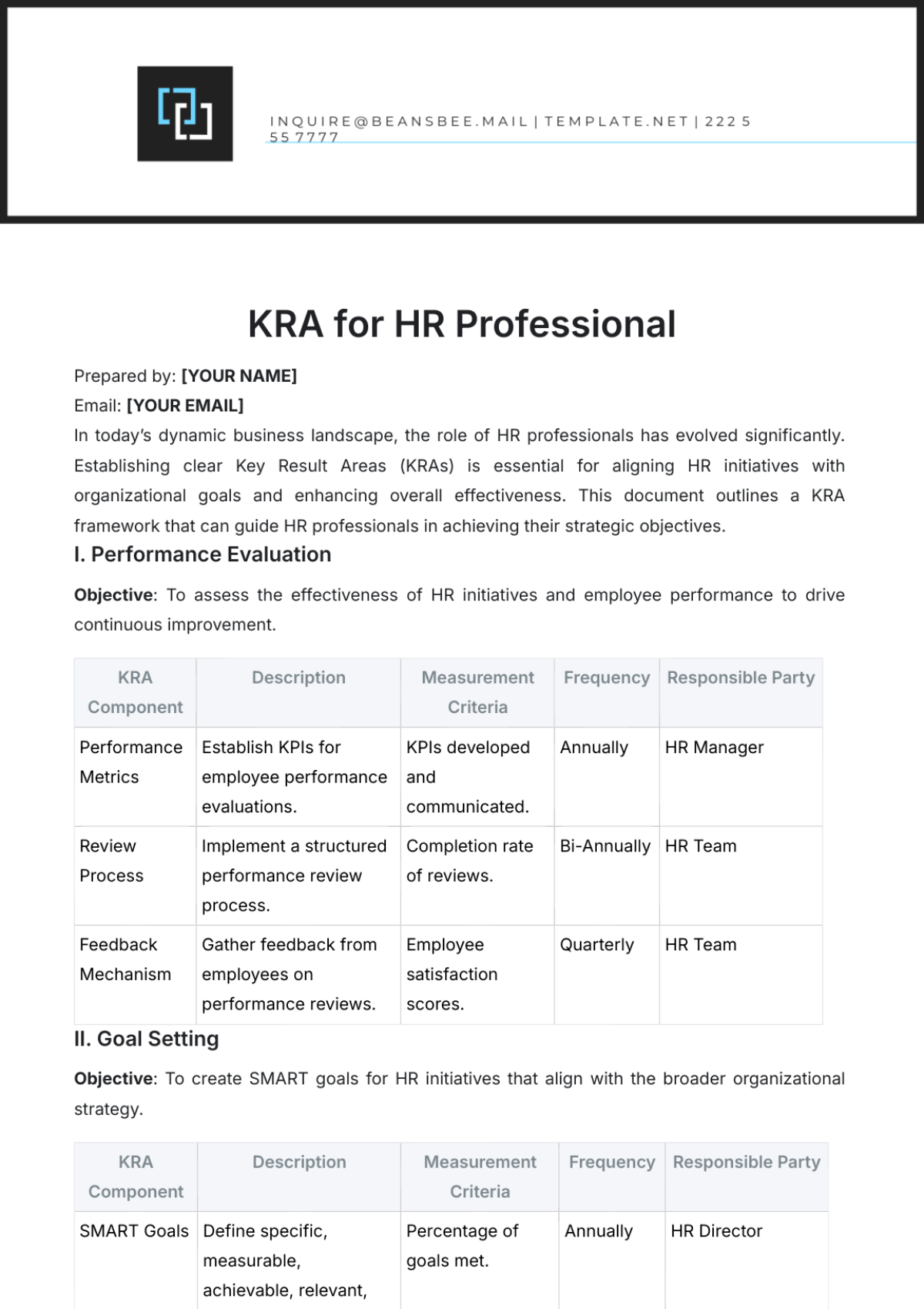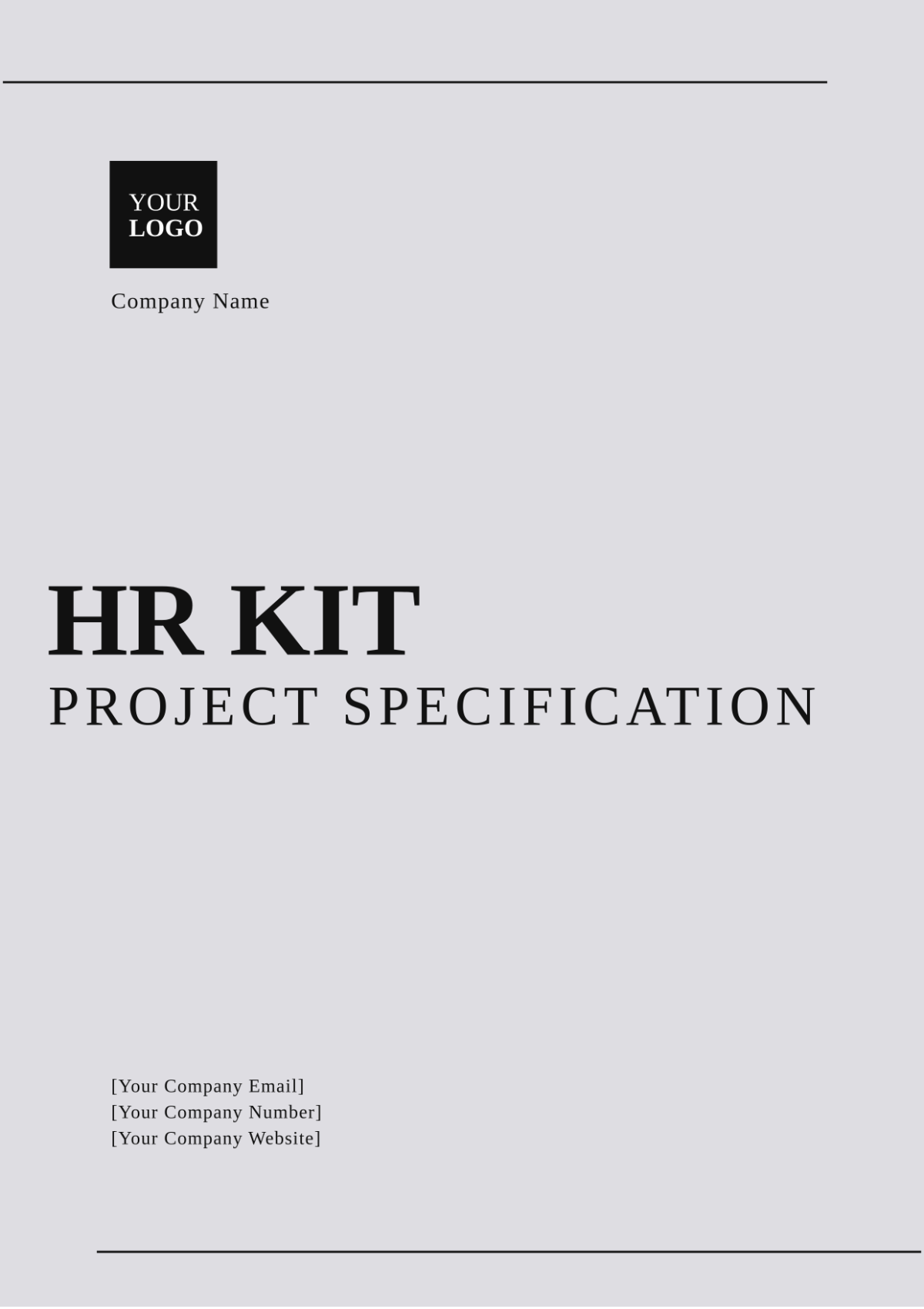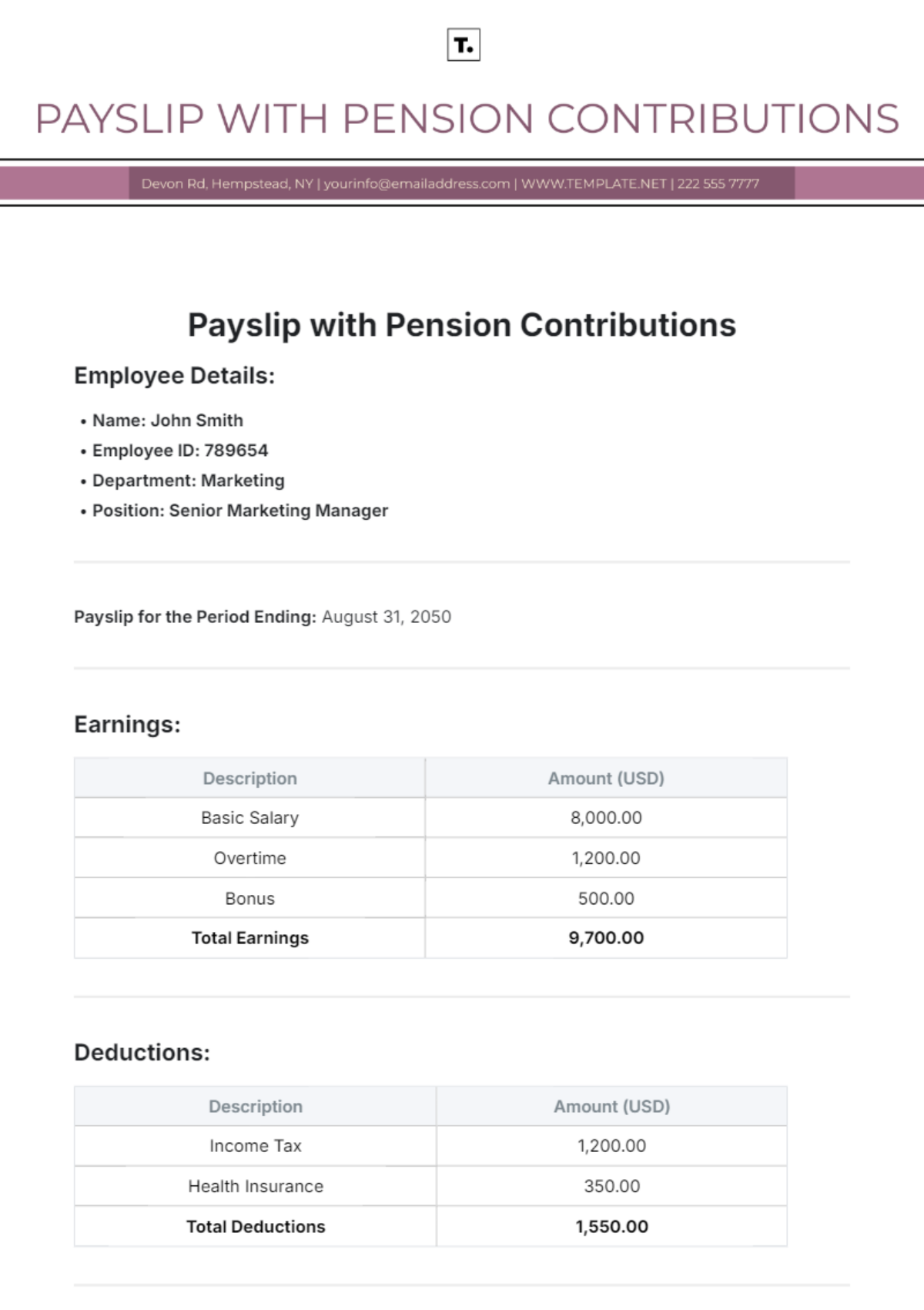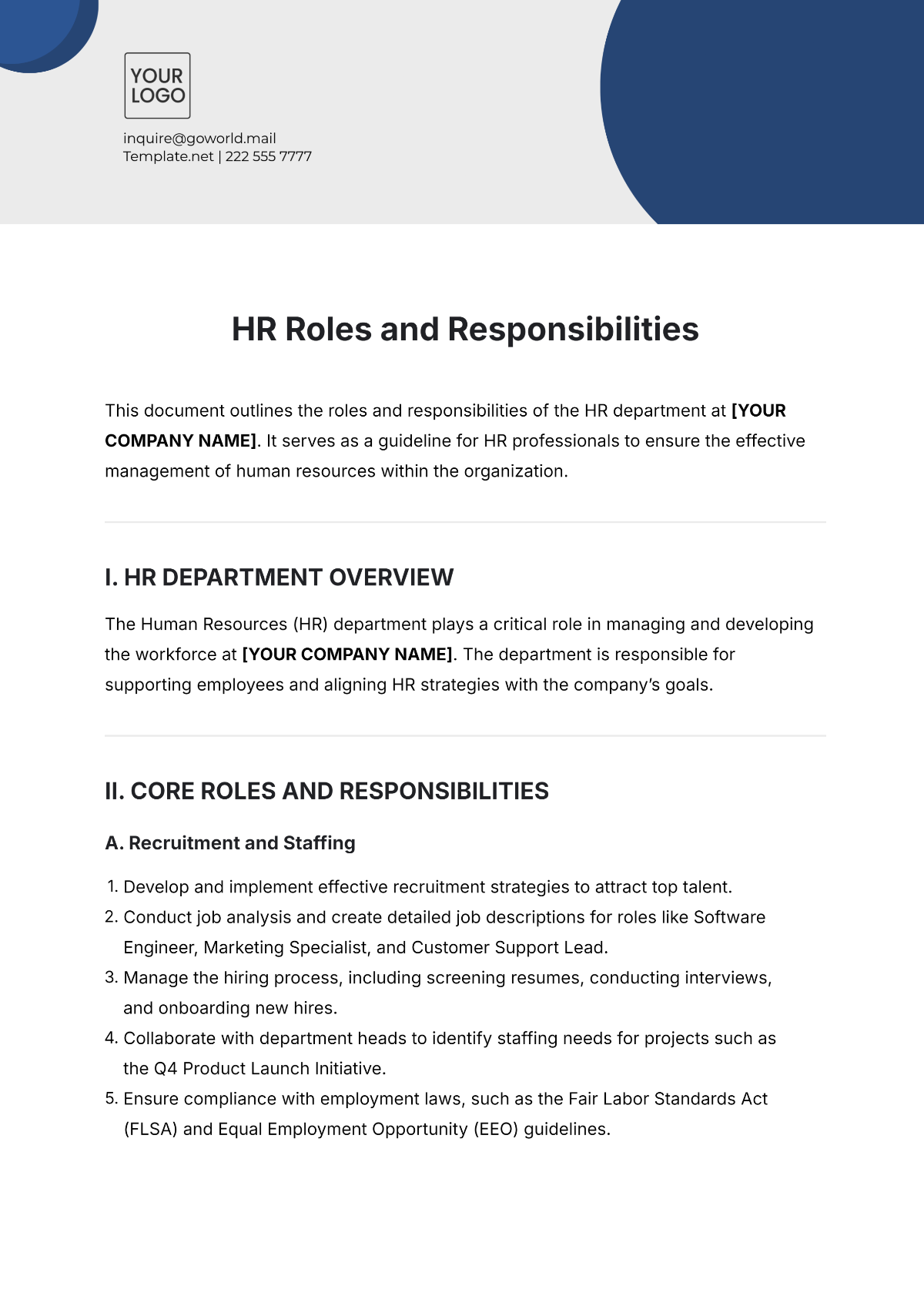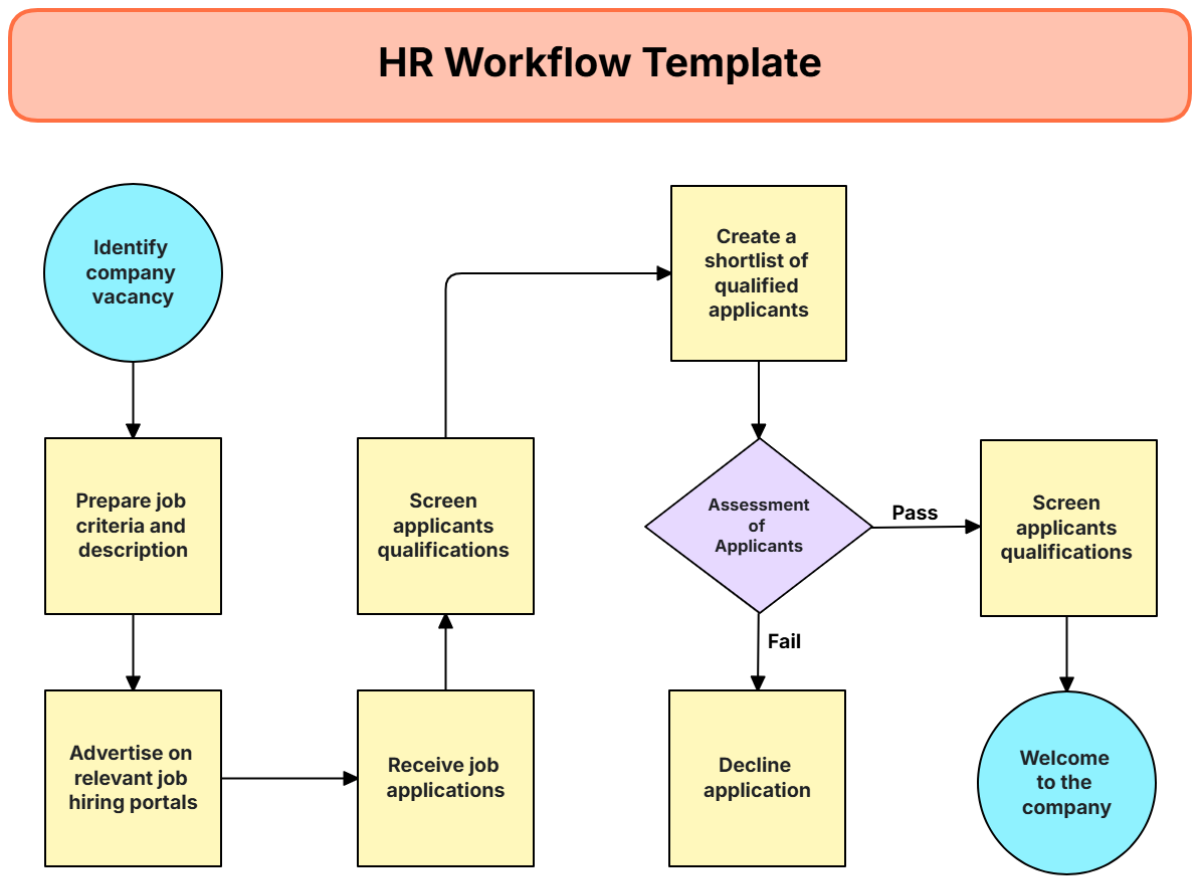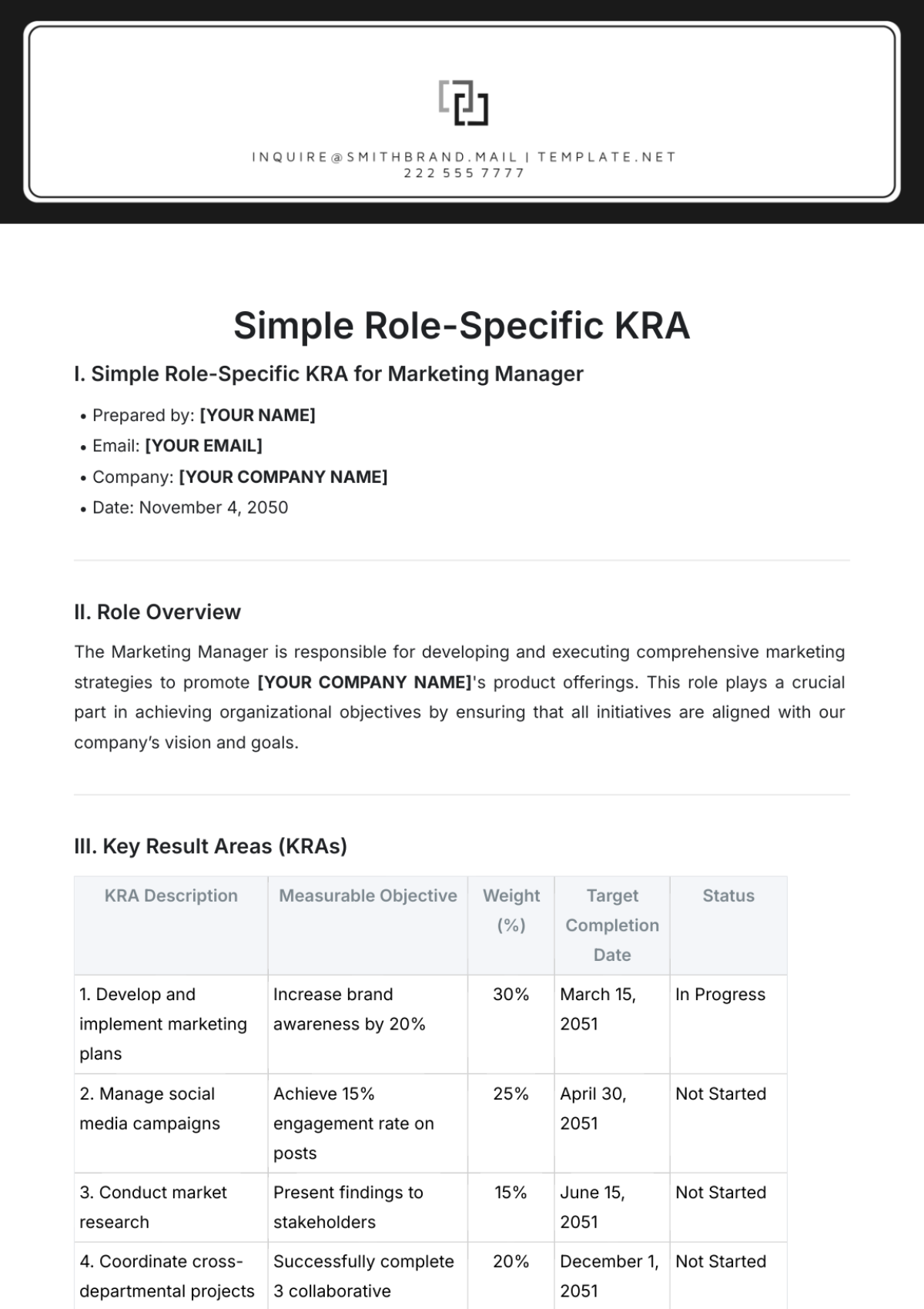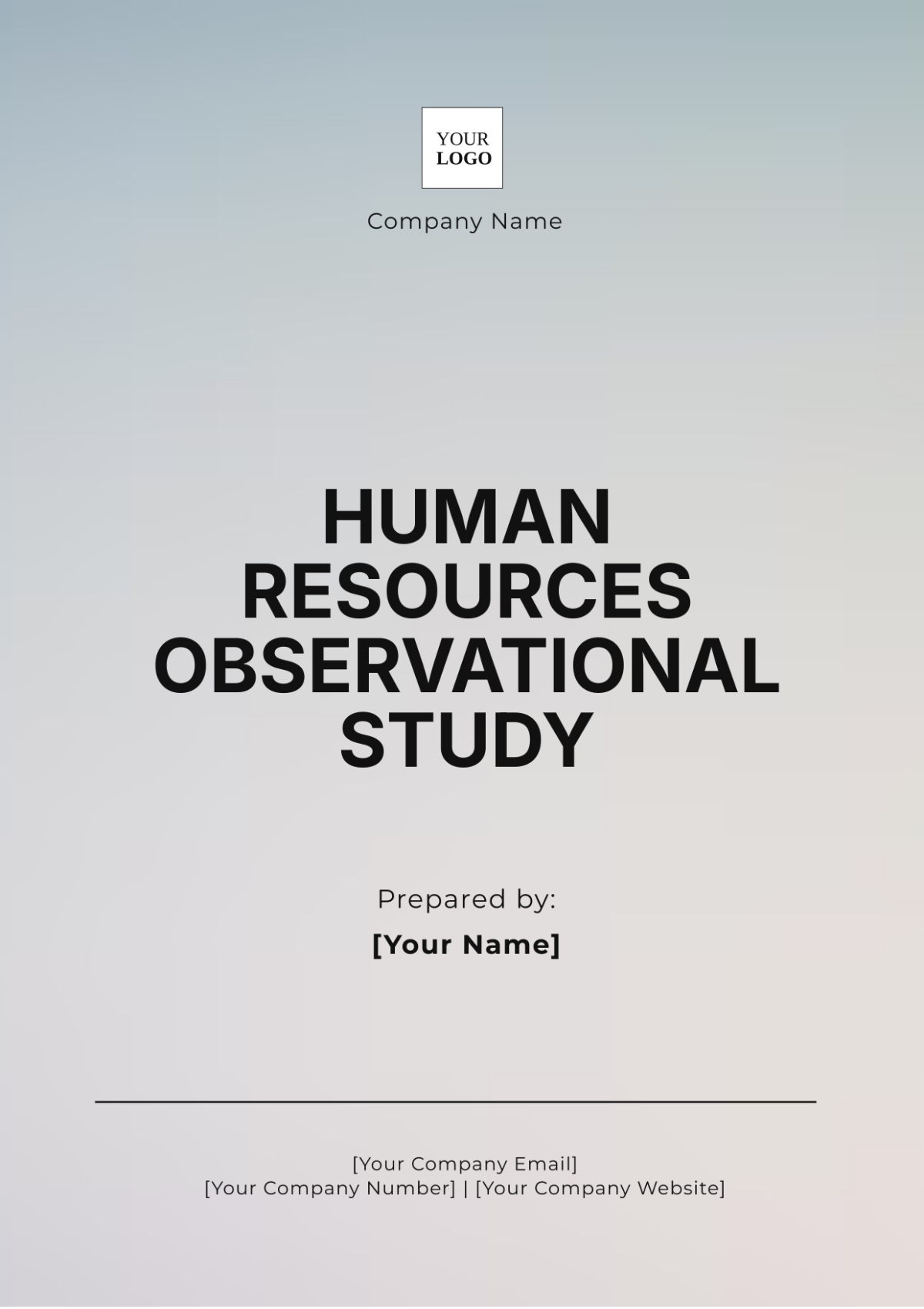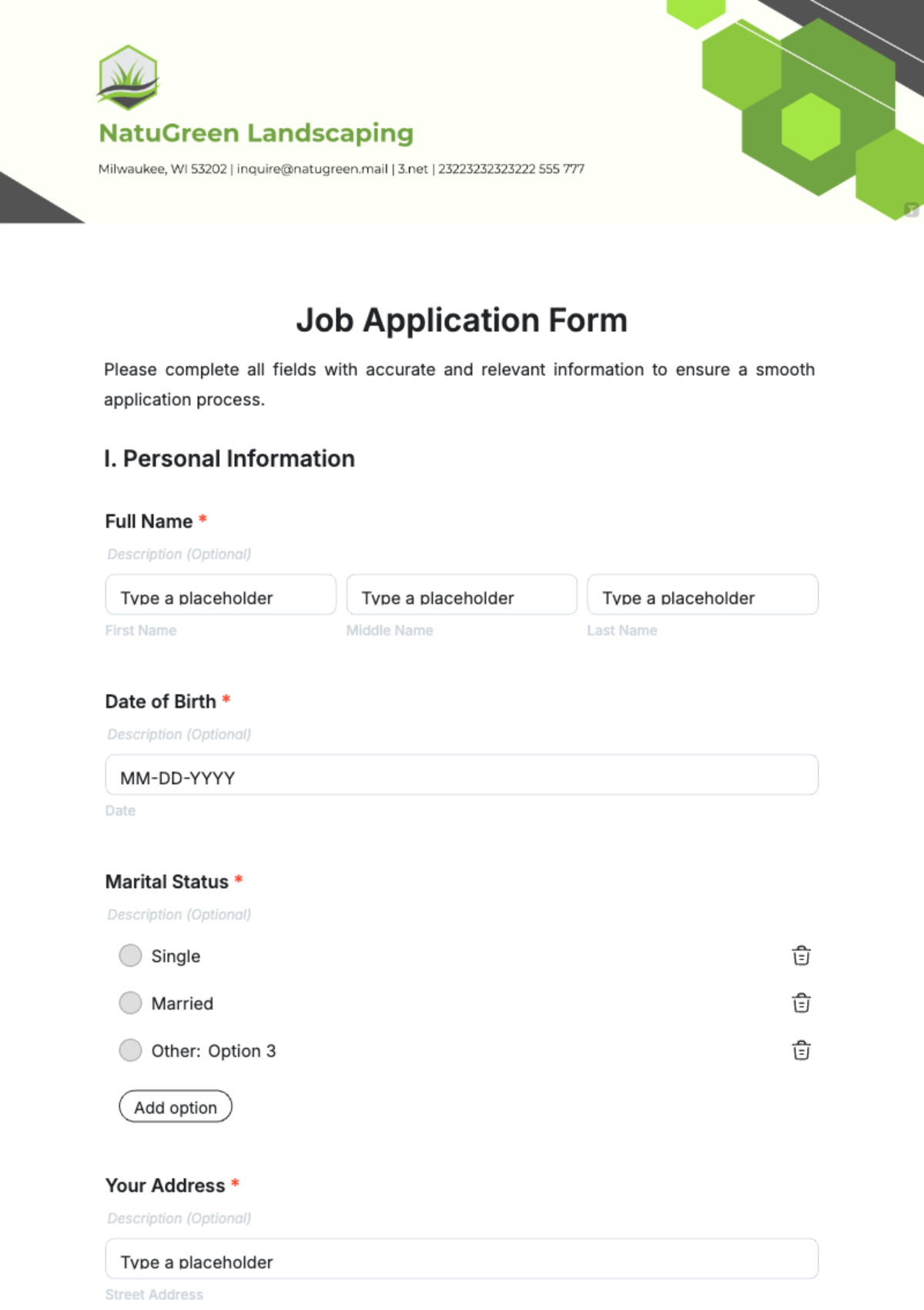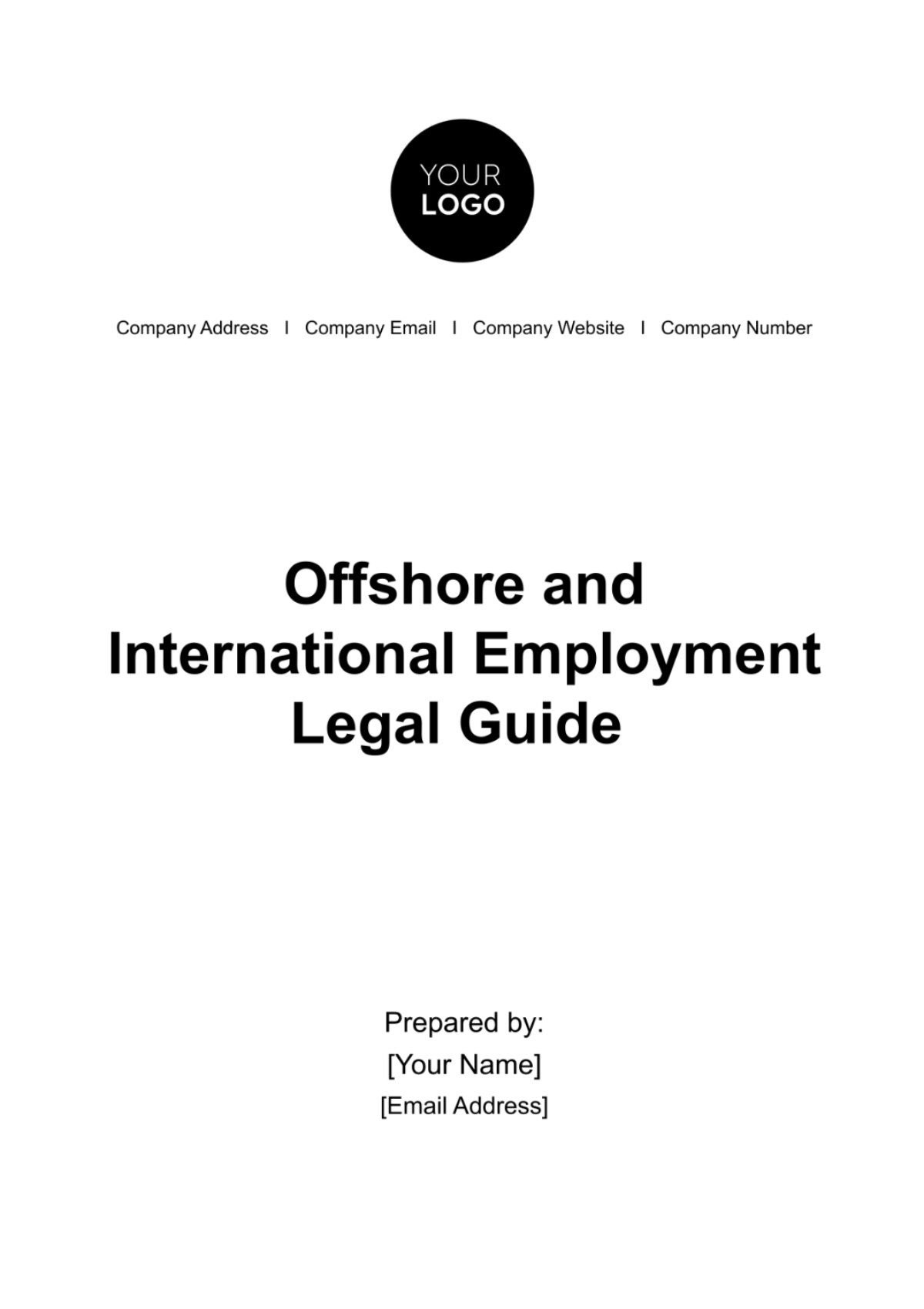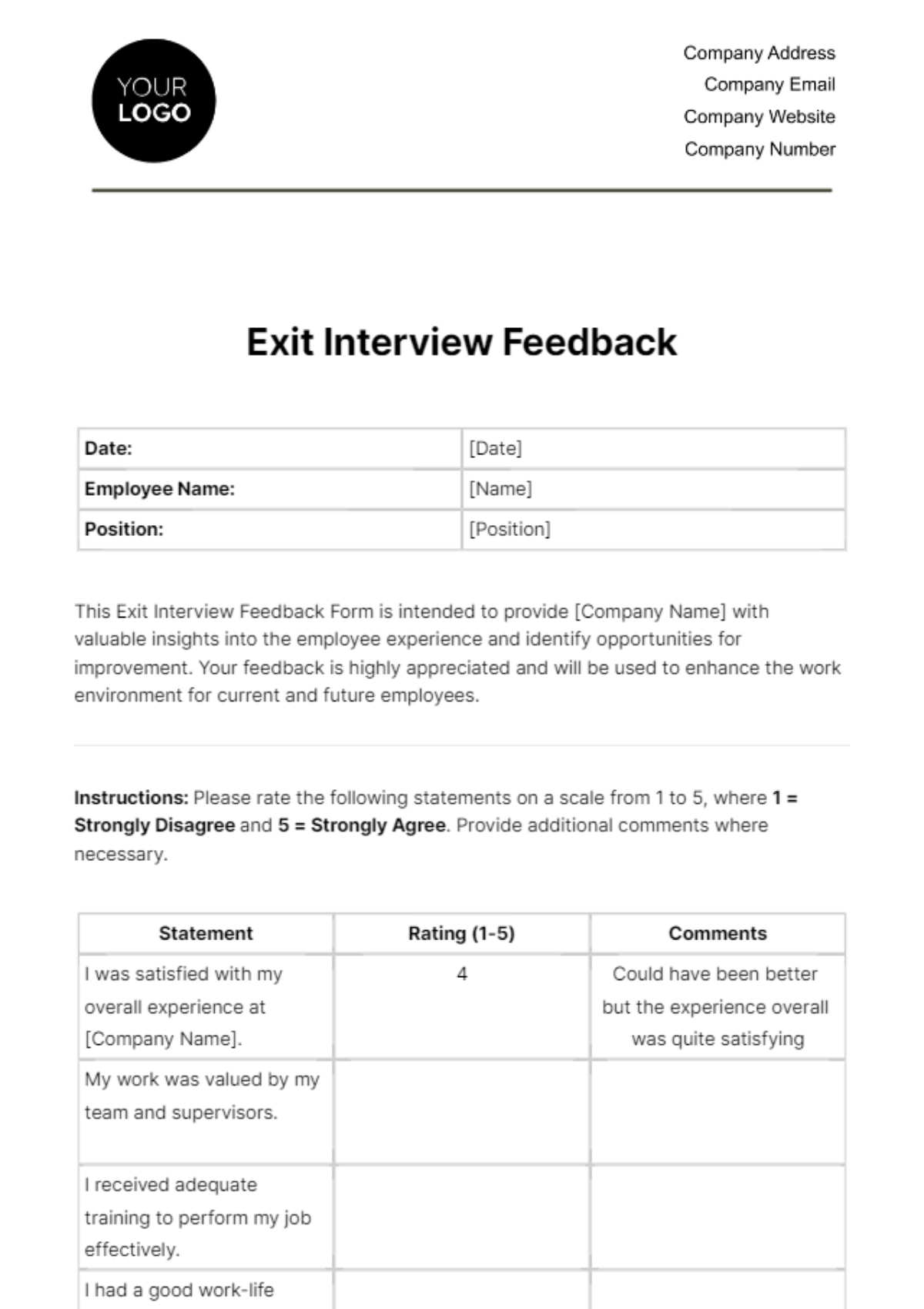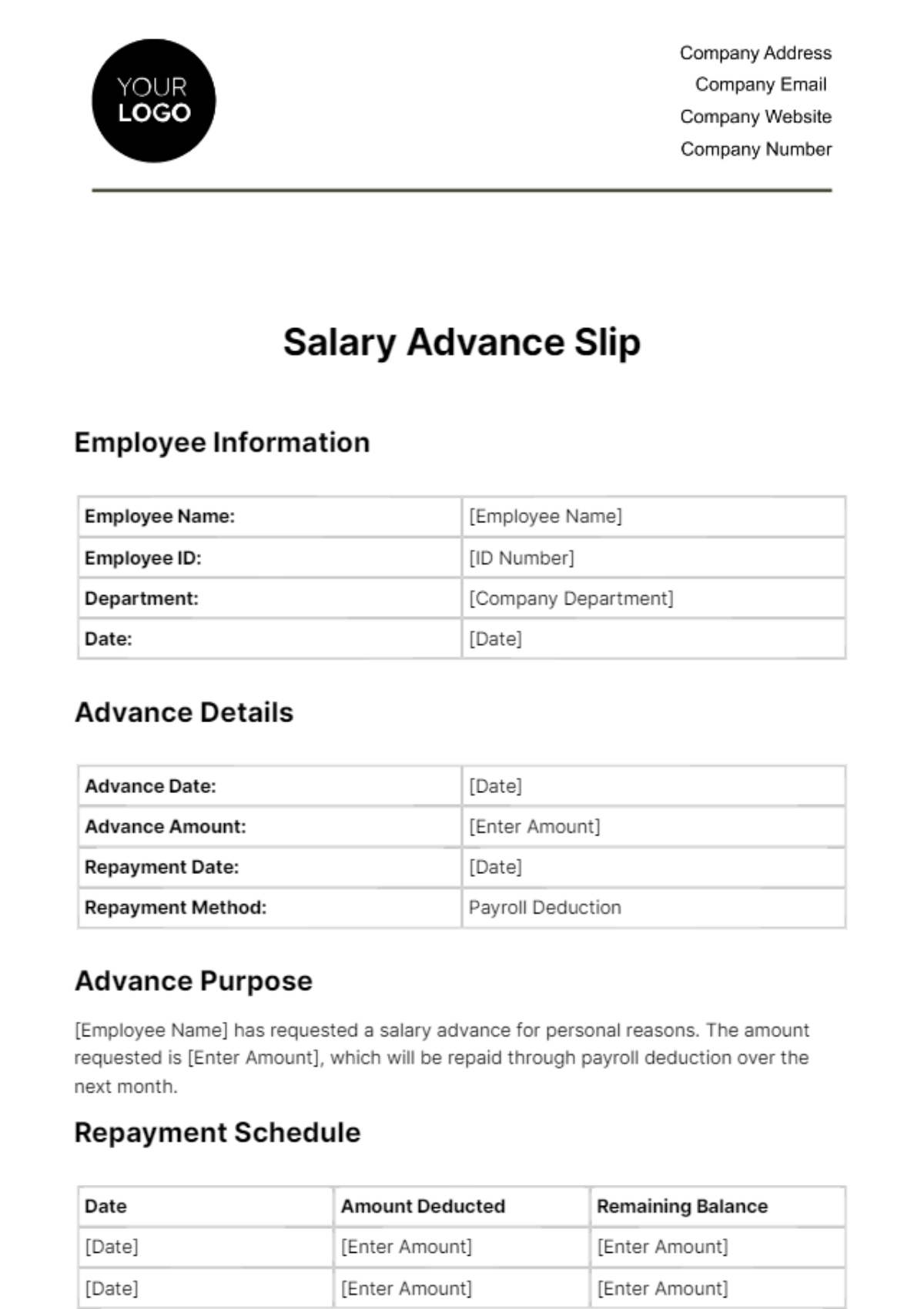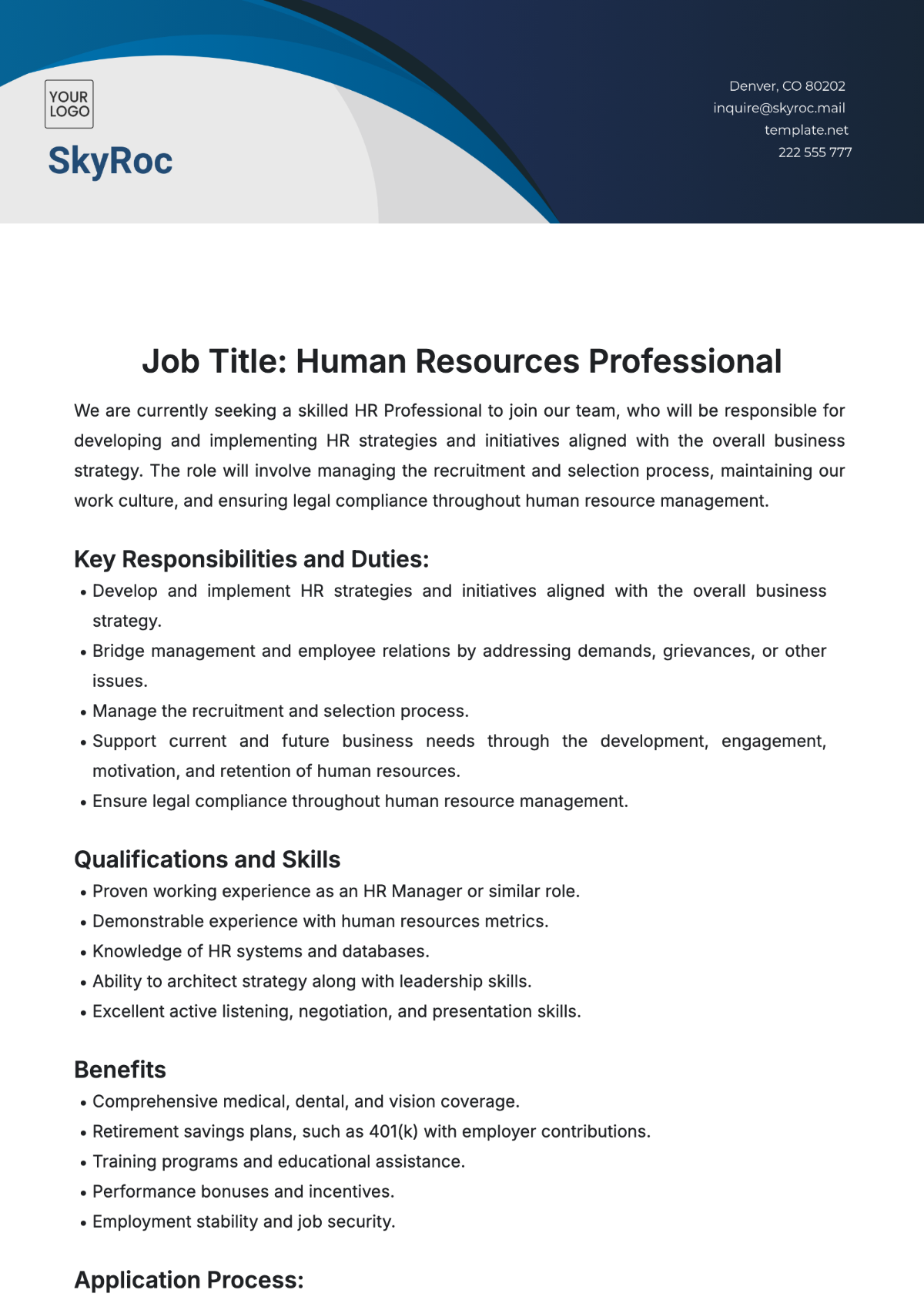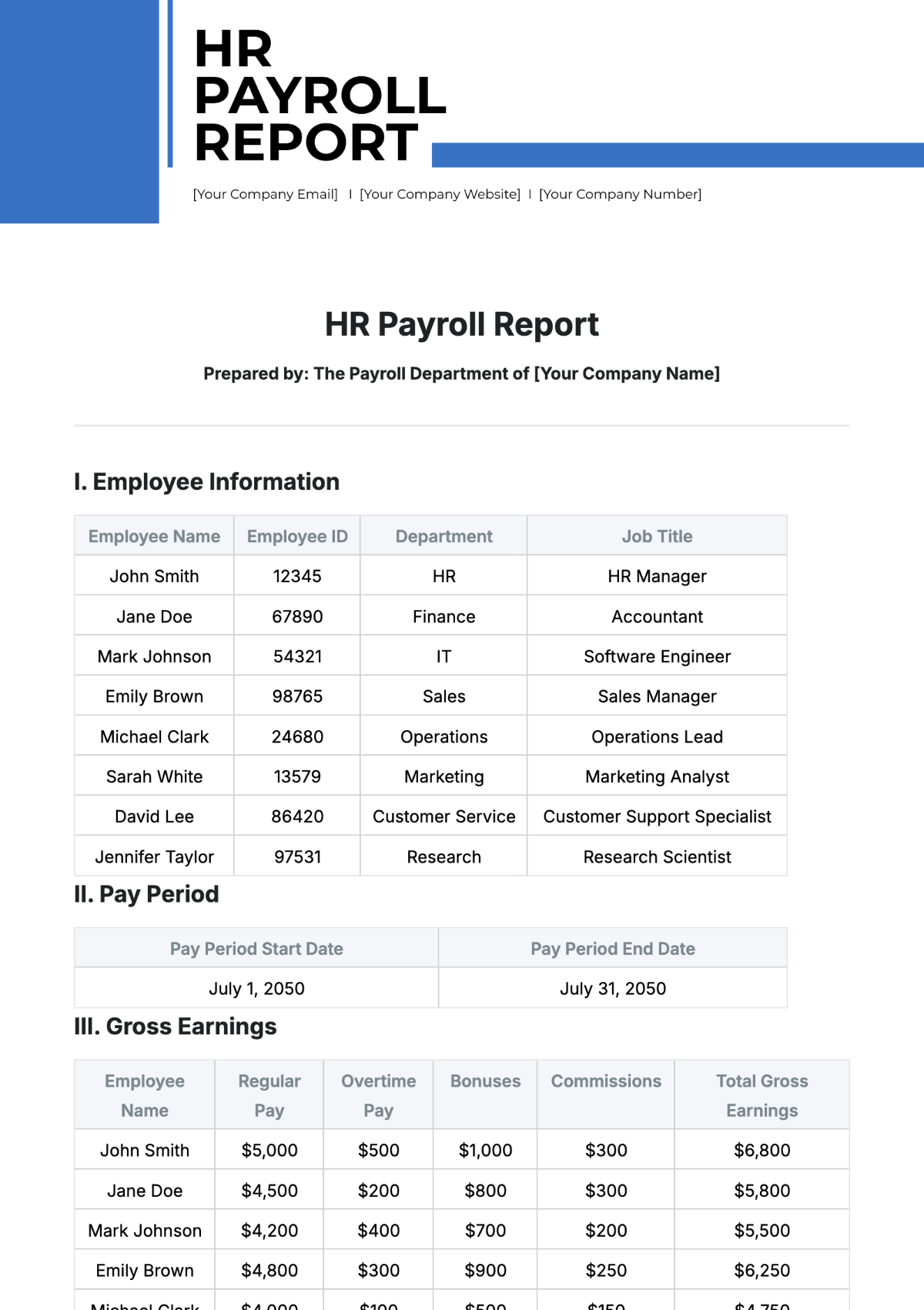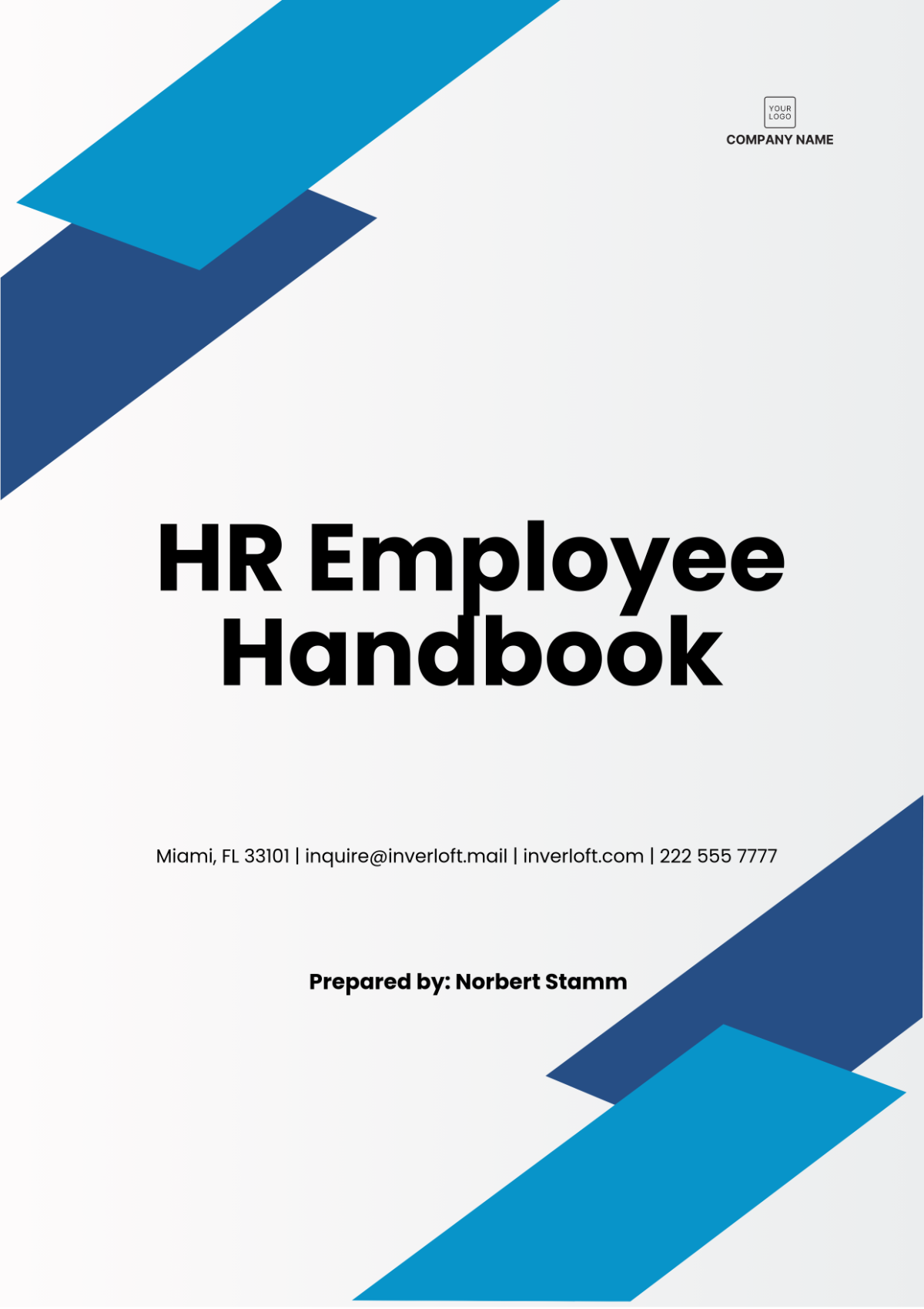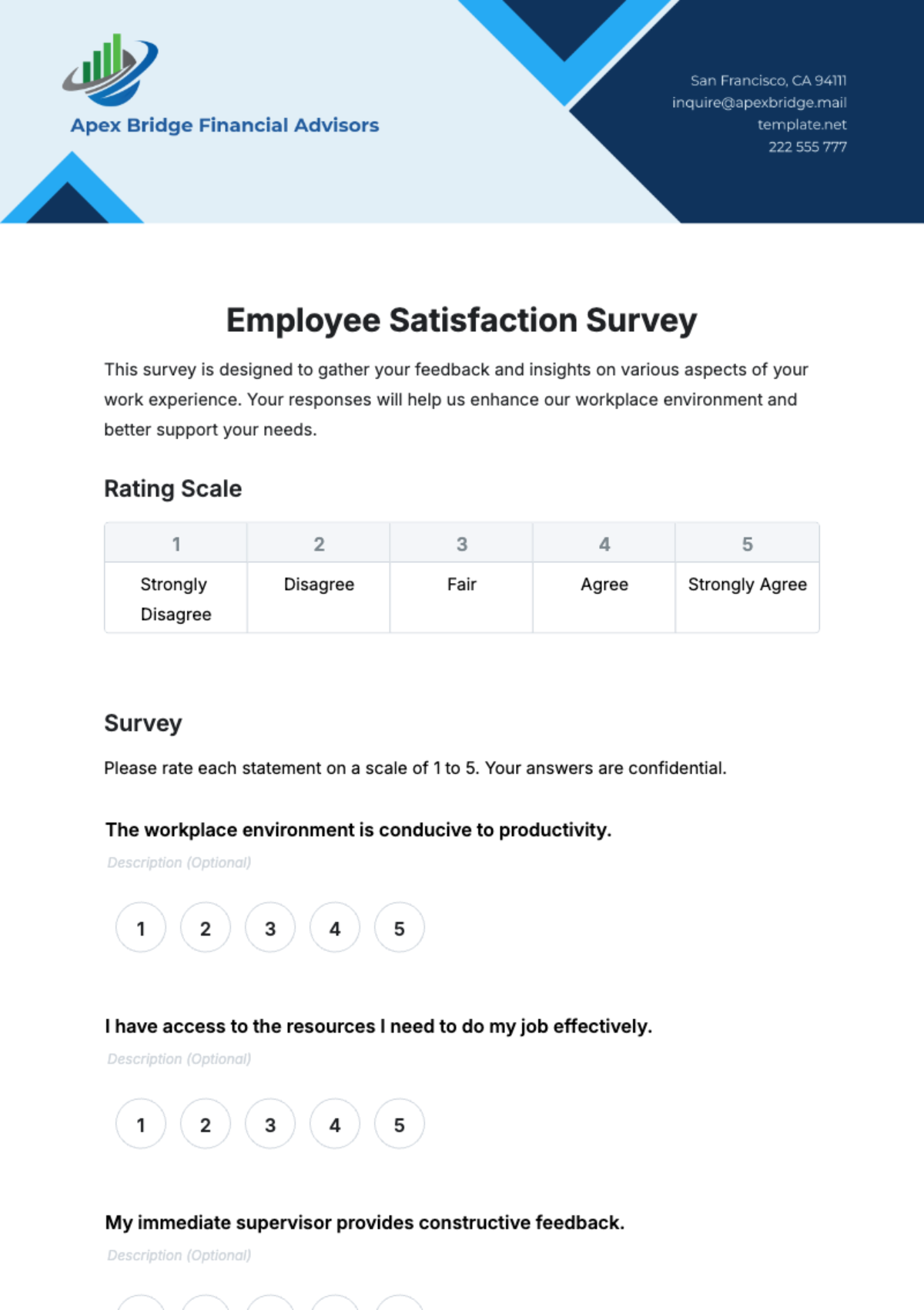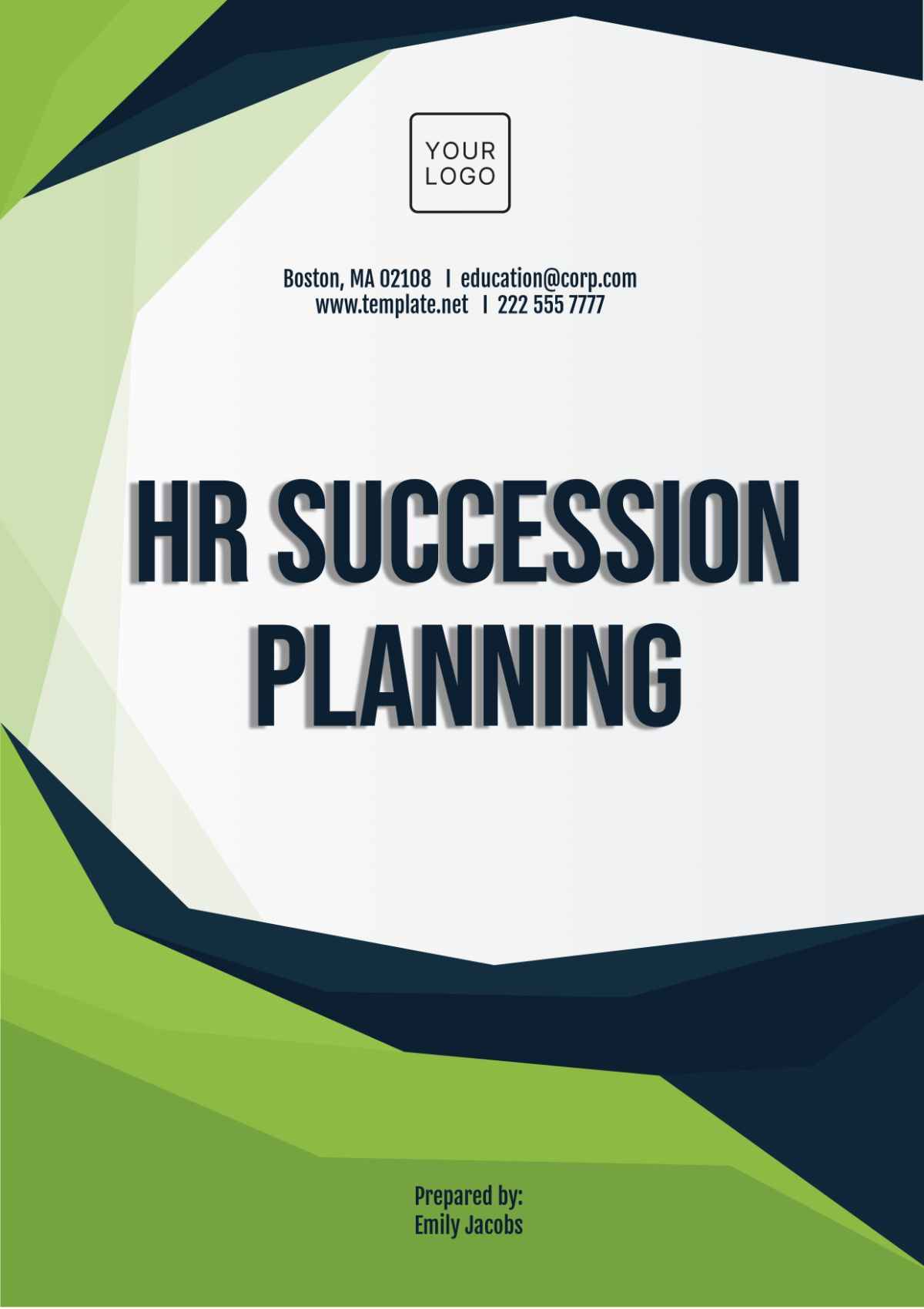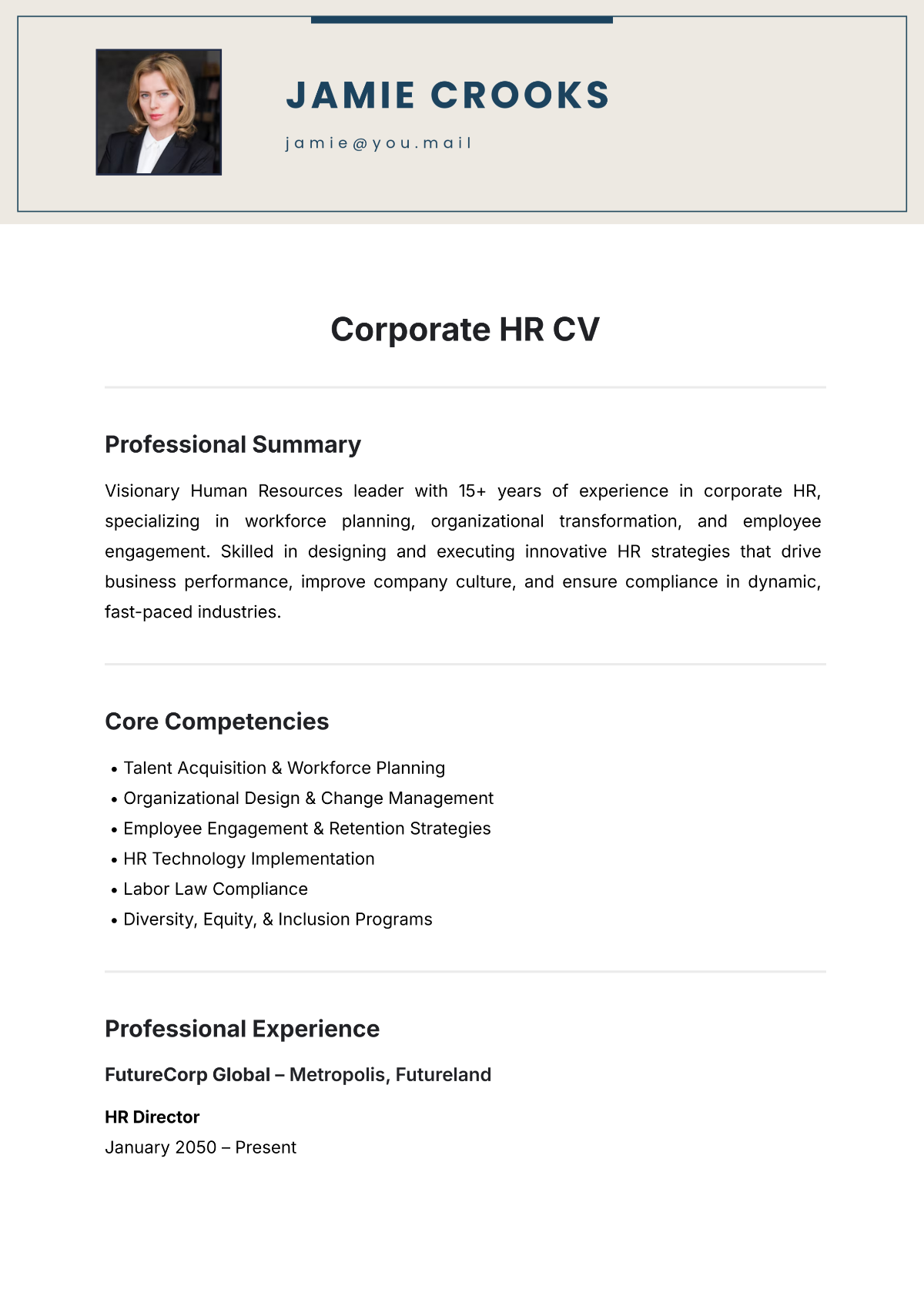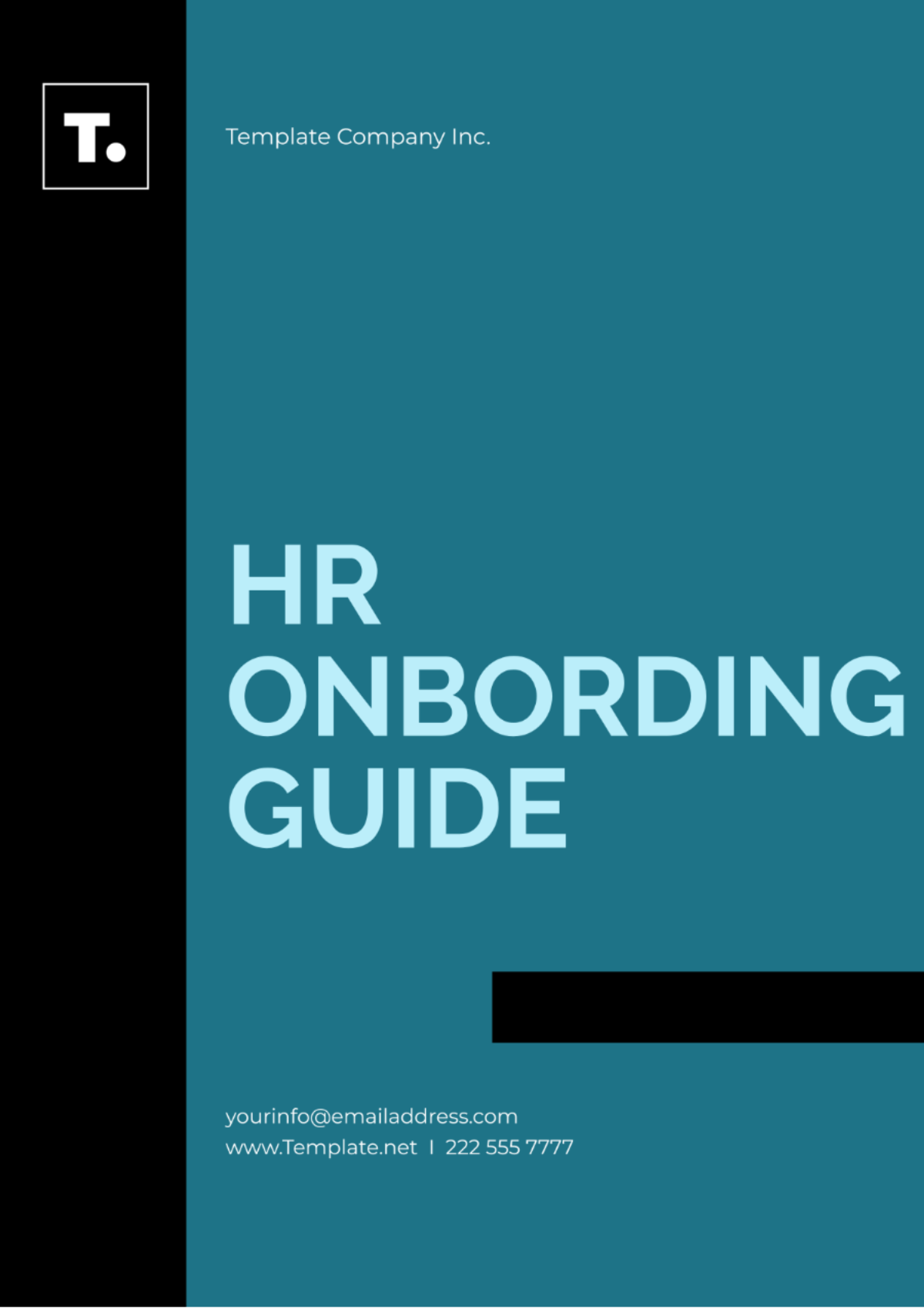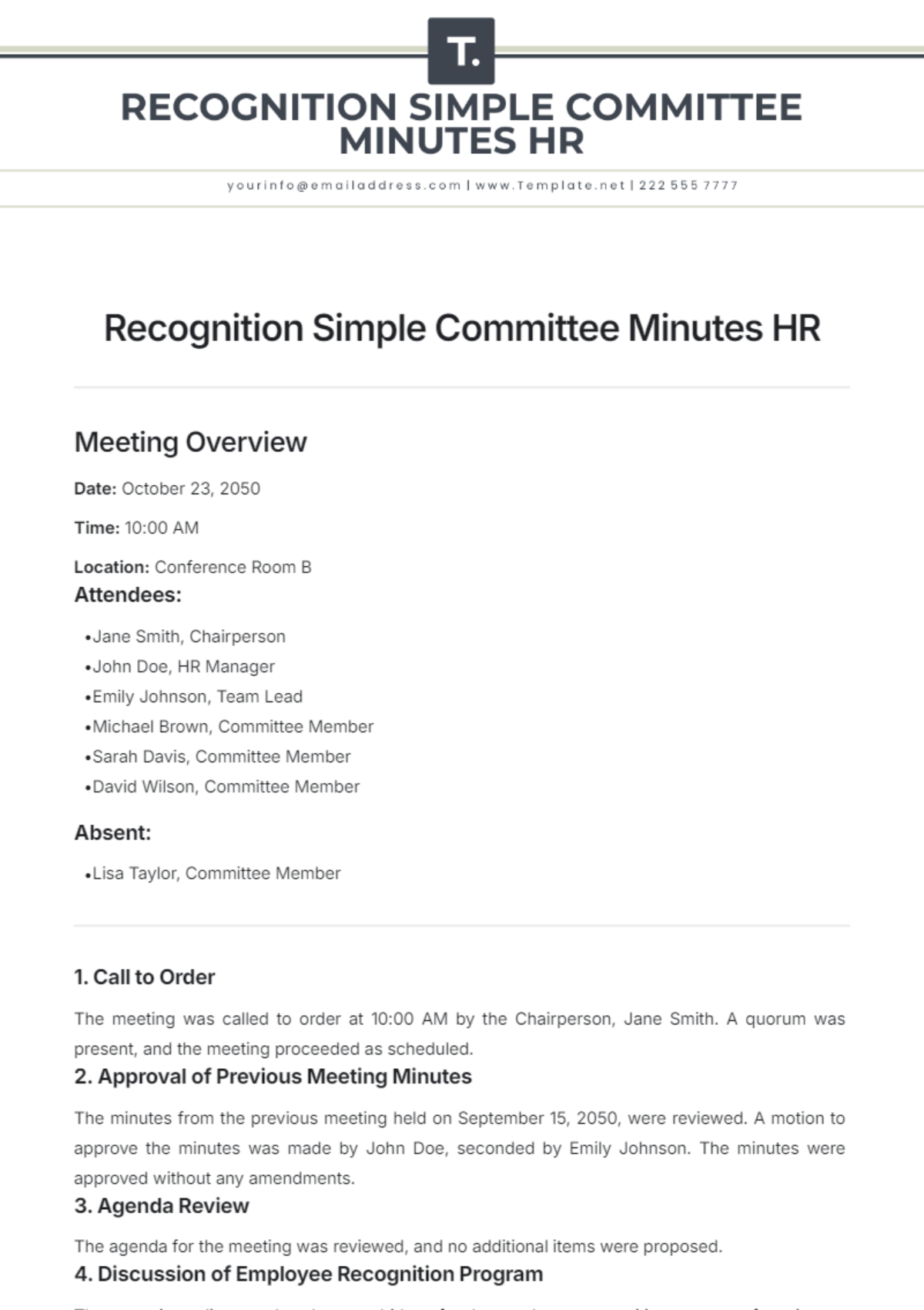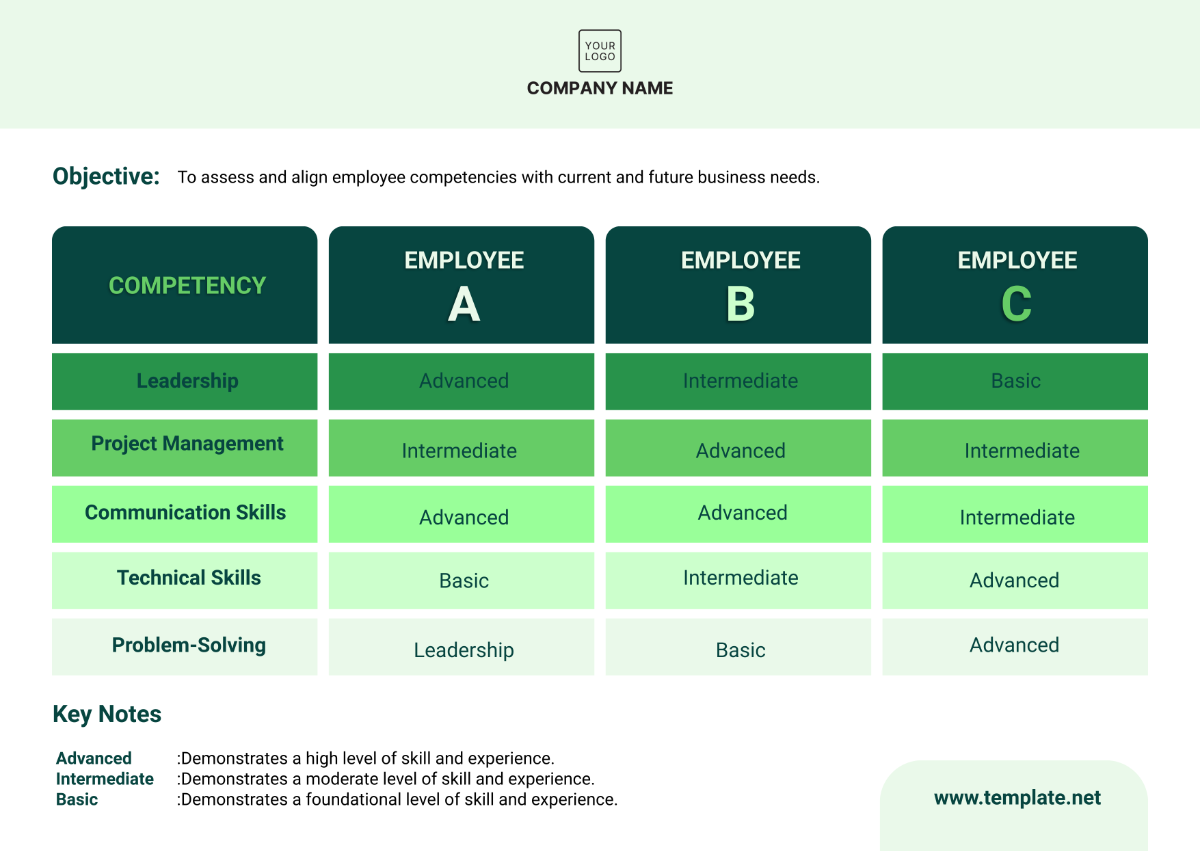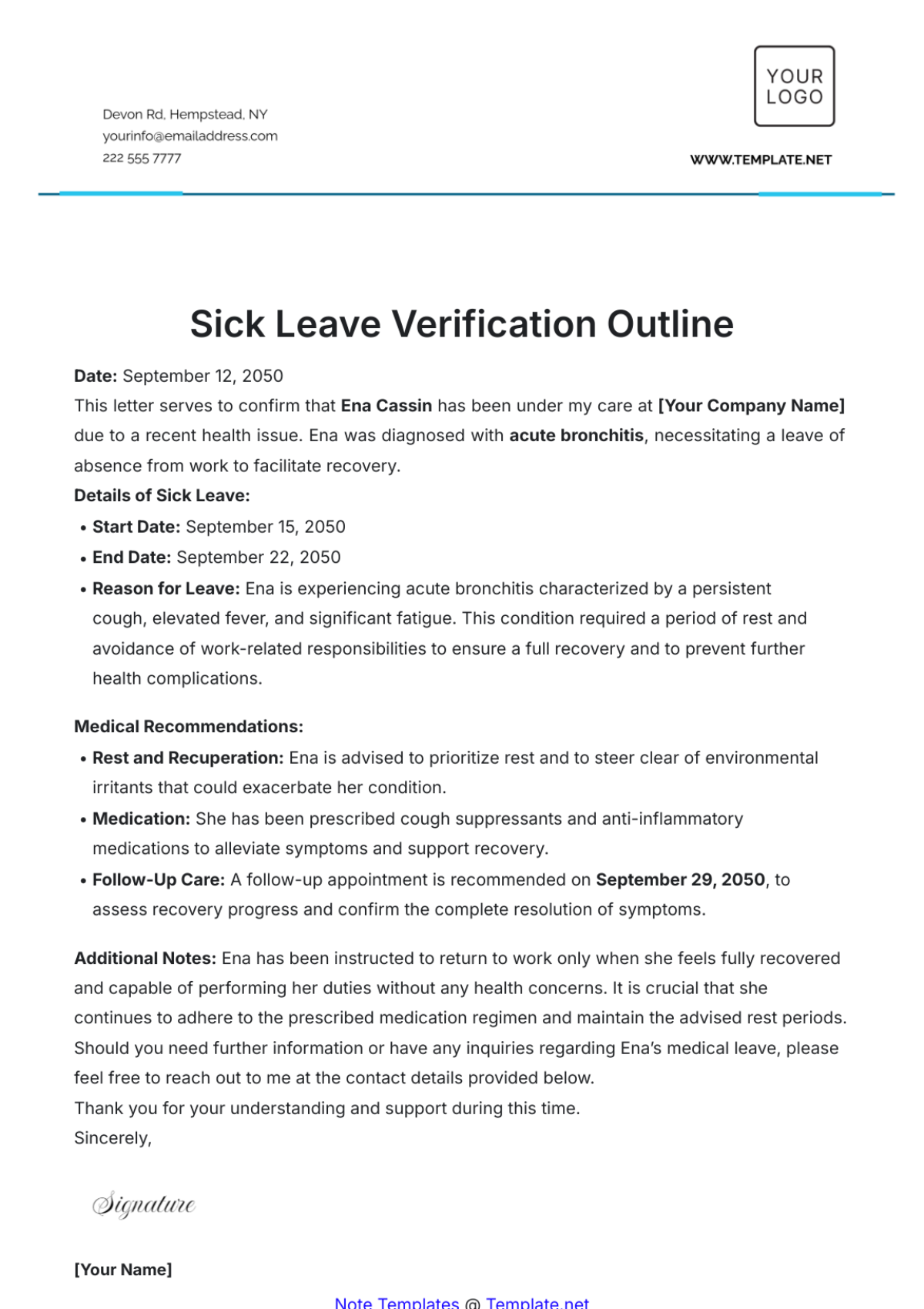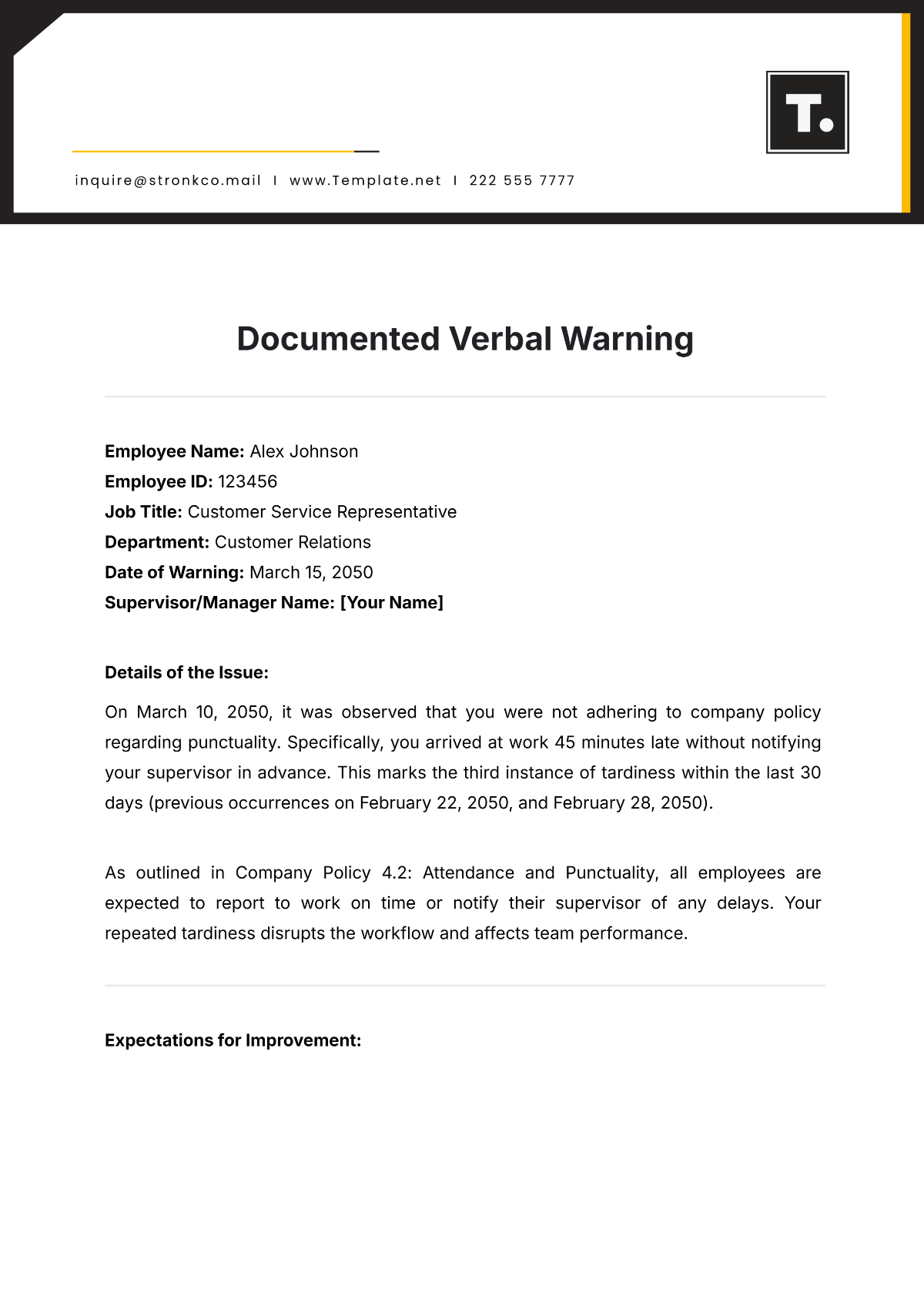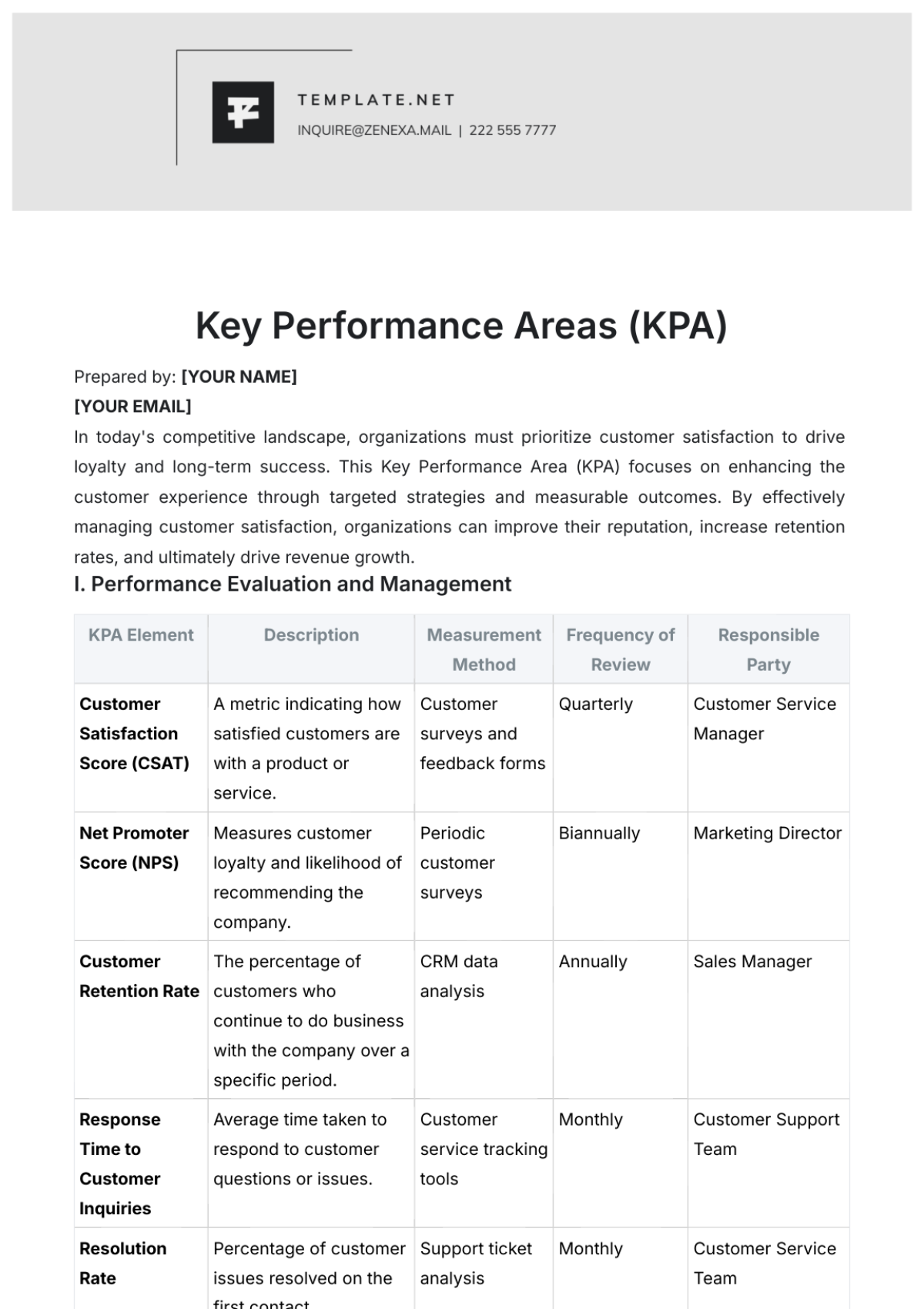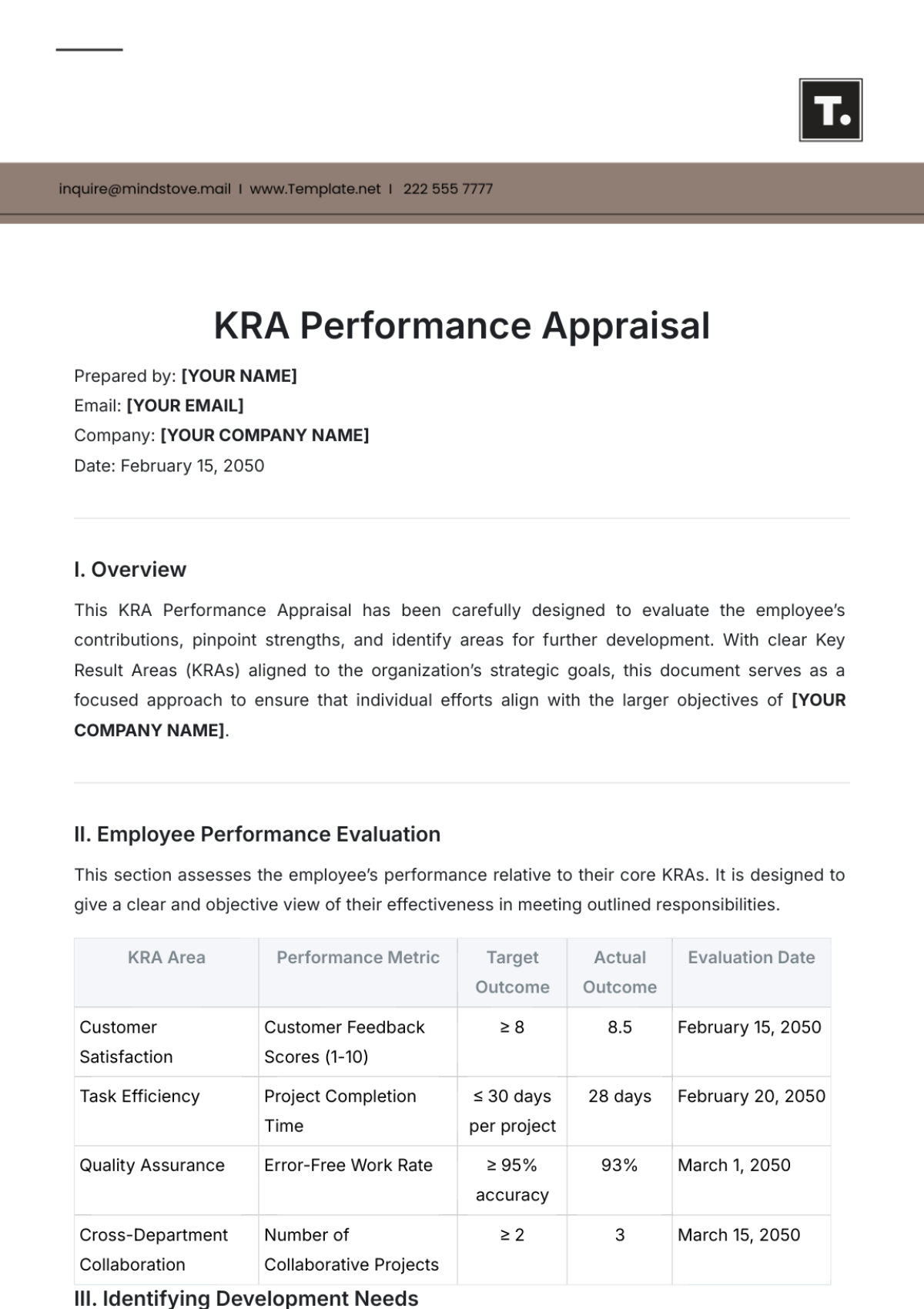Emergency Response and Preparedness Guide HR
Introduction
Emergencies can strike without warning, causing significant disruption to operations and posing risks to employees and assets. [Your Company Name] is dedicated to ensuring the safety of its workforce and stakeholders. This guidebook provides a comprehensive overview of our emergency response and preparedness policies and procedures.
Purpose and Scope
The paramount concern for [Your Company Name] is the safety and well-being of its workforce, stakeholders, and physical assets. Emergencies can strike without notice, potentially leading to operational disruptions, financial losses, and even endangering lives. To address these challenges, this guidebook serves multiple integral functions:
Purpose:
To heighten awareness of potential emergencies, educating employees on their nature, likelihood, and potential impact.
To equip every member of the company with the knowledge, tools, and procedures to effectively and safely respond to emergencies.
To ensure a seamless, efficient, and coordinated response during emergencies that involves all levels of the organization.
To provide a foundation for continuous improvement, adapting our procedures based on past experiences and emerging threats.
Scope:
This guidebook covers a broad spectrum of emergencies, from natural disasters like earthquakes and floods, to human-induced incidents like fires or security breaches.
While primarily targeted towards our employees, this guidebook also considers the safety of visitors, vendors, clients, and neighboring communities.
The protocols are tailored to accommodate the specificities of different facilities within [Your Company Name], from the main office building to satellite locations and warehouses.
While immediate response is vital, this guidebook also provides directives for long-term resilience and recovery, ensuring that the company can quickly return to normalcy after an incident.
By adhering to the Purpose and Scope defined herein, [Your Company Name] demonstrates its unwavering commitment to fostering a safe, resilient, and prepared organizational environment.
Roles and Responsibilities
Understanding the roles and responsibilities during an emergency is crucial for an organized and effective response. We have structured a hierarchy of roles tailored to address a variety of scenarios, ensuring that every situation is met with expert guidance and swift action.
ROLE | RESPONSIBILITY |
|---|---|
Emergency Director | Oversees the entire emergency response, ensuring all teams are coordinated and that resources are efficiently allocated. |
Communication Coordinator | Acts as the central hub for all communications during an emergency. They ensure that all employees are informed of the situation and advised on necessary actions. |
Medical Team | Provides immediate medical assistance and care during emergencies. They also coordinate with local hospitals and clinics for additional medical support. |
Evacuation Warden | Ensures the safe and orderly evacuation of premises during emergencies. Such as guiding employees to designated safe zones or assembly points and coordinating with security personnel to manage access and exit points. |
Security Team | Make sure the physical safety of the premises, assets, and individuals. Monitor and control access to the building or affected areas. In case of dire situations, they will coordinate with local law enforcement, if necessary. |
By clearly defining these roles and responsibilities, [Your Company Name] ensures a coordinated and efficient response, minimizing potential risks and ensuring the safety and well-being of everyone involved. Regular training and drills ensure that each team member is well-prepared and confident in their role during emergencies.
Communication Protocol
Effective communication is a cornerstone of any successful emergency response. A prompt, clear, and organized flow of information can drastically reduce confusion, panic, and consequent risks. At [Your Company Name], we've outlined a robust communication protocol that prioritizes safety, clarity, and speed.
Initial Alert System
Upon identification of an emergency, our first line of communication includes Emergency Notification Devices. These consist of sirens and alarms tailored for immediate threats, accompanied by flashing lights, especially beneficial in areas with high ambient noise. Alongside these, an Automated Messaging System is activated, sending out bulk alerts to employees' registered mobile numbers and emails. This system gives recipients a snapshot of the situation and the immediate actions required.
Ongoing Communication
As the situation unfolds, the Emergency Communication Center (ECC) becomes the heartbeat of our response. This dedicated area, equipped with advanced communication tools, ensures the ERT remains in sync and can disseminate information continuously. Public Address (PA) Systems in various parts of the facility broadcast regular announcements, keeping everyone informed. Digital Communication Boards strategically positioned around our premises further augment these efforts, displaying real-time updates and guiding individuals to safety. In areas where regular communication might be compromised, Two-way Radios provide an invaluable line of communication between ERT members.
External Communication
Recognizing the importance of managing information flow beyond our premises, a specialized Media and Public Relations (PR) Team takes charge. They are responsible for crafting and releasing official statements, ensuring that external parties receive accurate information. This team also addresses media inquiries, ensuring consistency in our messaging. A designated liaison streamlines communication with emergency services, local governmental units, and other essential entities, ensuring external support is well-coordinated. To comfort and inform family members of our employees, a dedicated Family Information Line offers updates and acts as a reliable point of contact.
Post-Emergency Communication
Once the immediate crisis has been managed, it's crucial to reflect, understand, and learn. Debriefing Sessions provide platforms for employees and stakeholders to grasp the sequence of events and the rationale behind decisions made. We believe in continuous improvement and, hence, encourage feedback through various channels, allowing us to refine our protocols. Finally, broader company updates related to the incident are shared via official company platforms, including the website, intranet, and social media, ensuring the larger [Your Company Name] community stays informed.
Emergency Procedures
Safeguarding our employees, assets, and stakeholders is our topmost priority. To achieve this during crises, we've meticulously designed a set of procedures that are both comprehensive and flexible, ensuring that responses are timely, effective, and adaptive to the unique nature of each emergency.
FIRE EMERGENCIES: Fires can escalate quickly, causing significant harm and property damage. The moment a fire is detected or suspected:
Raise the Alarm: Immediately activate the nearest fire alarm pull station.
Isolate the Area: Close doors behind you to contain the spread.
Evacuate Safely: Use predetermined routes to move to the nearest exit, avoiding elevators. Help colleagues if needed, especially those with mobility challenges.
Contact: Dial the fire department, providing them with a clear description of the situation.
Assemble: Once outside, gather at the designated assembly point, ensuring everyone is accounted for.
MEDICAL EMERGENCIES: In a bustling environment like ours, medical emergencies can arise unpredictably. When faced with one:
Alert and Assess: Immediately call for medical assistance using our internal communication channels. Assess the severity without putting yourself at risk.
Provide Preliminary Care: If trained, administer basic first aid while waiting for the professional medical team.
Secure the Area: Ensure that there's ample space for the affected person and that the area is safe from hazards.
Document: Once the situation is under control, document details, which may be crucial for subsequent medical interventions or investigations.
NATURAL DISASTERS: Events like earthquakes, floods, or severe weather conditions require a holistic approach.
Stay Informed: Keep abreast with official weather updates and warnings.
Immediate Response: In case of earthquakes, the 'Drop, Cover, Hold On' method is recommended. For other disasters, seek shelter in a predetermined safe zone.
Evacuation (if necessary): Depending on the situation, an evacuation may be ordered. Adhere strictly to predefined routes and assembly points.
Stay Connected: Maintain communication using company-provided channels to receive updates and check on colleagues.
Regular updates, training sessions, and drills related to these procedures ensure that every member of [Your Company Name] is well-equipped to respond effectively. We strongly believe that while we cannot always predict emergencies, we can certainly prepare for them, minimizing potential harm and ensuring rapid recovery.
Training and Drills
At [Your Company Name], we ensure that every individual, from new hires to seasoned professionals, is not only well-versed with our emergency procedures but also regularly practices them. Our commitment to rigorous training and frequent drills ensures a proactive, swift, and coordinated response during real-life emergencies.
TRAINING | DESCRIPTION |
|---|---|
Module-Based Learning | A series of interactive training modules covers various emergency scenarios, equipping employees with the knowledge and tools necessary to respond effectively. |
Hands-on Experience | Practical demonstrations, such as using fire extinguishers or administering basic first aid, allow employees to familiarize themselves with essential equipment and techniques. |
Quarterly Workshops | These workshops, led by experts, introduce updates to our emergency protocols, new equipment, or advancements in safety measures. |
Scenario-Based Drills | From fires and medical emergencies to natural disasters, various scenarios are enacted to test our preparedness. |
Unannounced Drills | Occasional surprise drills ensure genuine reactions and help in identifying areas that might need more attention. |
Post-Drill Debriefings | After every mock drill, a debrief session captures feedback, evaluates performance, and determines areas for improvement. |
Expert Sessions | Specialists from fields like fire safety, medical emergency response, and disaster management are invited periodically to share insights, train our staff, and evaluate our emergency preparedness measures. |
Partnerships with Local Authorities | By collaborating with local emergency services, we ensure that our response mechanisms are synchronized with broader community efforts, enhancing effectiveness during city or region-wide emergencies. |
The focus on training and drills at [Your Company Name] stems from our belief that a well-prepared team not only ensures their safety but can also be instrumental in safeguarding colleagues and assets. Through continuous learning and practice, we foster a culture of safety, vigilance, and proactive response.
Recovery and Post-Incident Review
Emergencies, by their very nature, are disruptive and potentially devastating. However, at [Your Company Name], our commitment to safety and continuity extends beyond the immediate response. We place significant emphasis on effective recovery and in-depth post-incident analyses, ensuring that our resilience grows with each challenge.
Recovery Operations:
Immediate Support and Assistance: Following an emergency, our first objective is to provide immediate relief to affected employees, ensuring their well-being. This can include medical care, counseling, or logistical support, depending on the nature and scale of the incident.
Infrastructure Restoration: A specialized team assesses the damage to our facilities and infrastructure. They prioritize tasks, ensuring that critical operations can be resumed at the earliest. Repairs, replacements, and temporary solutions are sought to bring the business back to its regular functionality.
Data and IT Recovery: Given the digital age, safeguarding and restoring data is paramount. Our IT teams, equipped with robust backup systems, work tirelessly to retrieve lost data and ensure that our digital operations are restored to their optimal capacity.
Supply Chain and Operational Continuity: Disruptions can affect our broader network, including suppliers and partners. A dedicated task force liaises with these stakeholders, strategizing solutions to ensure that the ripple effects of the incident are minimized.
Post-Incident Review and Analysis:
Data Collection: A multi-disciplinary team gathers detailed information about the incident. This includes timelines, immediate responses, challenges faced, and resources utilized.
Debriefing Sessions: Involved personnel, from ground-level responders to decision-makers, are brought together. They share their experiences, insights, and feedback in a structured and constructive environment.
Analysis and Report Generation: The collected data and feedback are synthesized into a comprehensive report. This report highlights successes, identifies areas of improvement, and provides recommendations for future responses.
Implementing Recommendations: Post-review, the actionable insights are not merely documented but are integrated into our protocols, training sessions, and emergency response strategies.
Engaging External Experts: Occasionally, third-party experts are brought in to provide an unbiased analysis of our response. Their expertise and external perspective can offer invaluable insights to refine our emergency preparedness.
Recovery and post-incident review at [Your Company Name] aren't just procedural steps. They are integral to our ethos of continuous improvement and unwavering dedication to safeguarding our employees, assets, and stakeholders. With each incident, we aim to emerge stronger, wiser, and more resilient, ready to face the challenges of tomorrow.
Conclusion
Emergency preparedness is not just a corporate directive; it's a collective commitment. Each individual, regardless of their role or rank, plays a pivotal part in fortifying our defenses against unforeseen challenges.
By diligently embracing and enacting the protocols detailed in this guidebook, [Your Company Name] fortifies its position against emergencies, cementing an environment of trust, safety, and collective resilience. Together, we safeguard not only our assets and operations but also the very essence of our community: the well-being and harmony of every member involved.

